Effect of Brazing Fillet on the Microstructure and Mechanical Properties of Vacuum Brazing Stainless Steel Joints
Abstract
1. Introduction
2. Experimental Materials and Methods
2.1. Specimen Preparation
2.2. Test Setup
3. Experimental Results
3.1. External Morphological Characteristics near the Brazed Region
3.1.1. Visual Inspection of Brazed Joints
3.1.2. Metallographic Structures of the Brazing Fillet
3.2. Content and Distribution of Major Elements
3.2.1. In the Brazing Seam
3.2.2. Near the Brazing Angle
3.3. Experimental Results of Brazed Joints Subjected to Tensile Loading
3.3.1. Tensile Strength of Brazed Joints
3.3.2. Post-Tension Damage Characteristics
4. Enhancement Mechanism of Brazing Fillet Based on FEM
4.1. Numerical Modeling
- (1)
- It is considered that the materials are ideal elastic–plastic bodies, isotropic and without any defects, and their behavior of yielding follows the Mises stress criterion.
- (2)
- Defects, such as weld cracks, at the microscale are not considered in the brazing process.
- (3)
- The existence of metal compounds and the diffusion between elements at high temperatures are not considered.
- (4)
- The fluidity of the solder after melting is not considered.
4.2. Numerical Results and Discussion
4.2.1. Experimental Verification
4.2.2. Damage Scenarios for Specimens THN and THK
4.2.3. Stress Analyses of Specimens THN and THK
5. Conclusions
- (1)
- A copper filler metal with a thickness of 60 µm exhibited good wettability to the base metal, resulting in good metallurgical bonding between the filler metal and base metal at the brazing seam. An increase in the thickness of the copper filler metal to 90 µm resulted in poor metallurgical bonding at the brazing seam and caused a lot of large islands, gaps, cavities, and cracks; however, it would generate a meniscus fillet at the end of the base plate.
- (2)
- The shear strength of the specimen THN is 180.5 MPa, while the shear strength of the specimen THK is 351 Mpa. Compared to the THN specimen, the strength of the THK specimen with poor bonding at the brazing seam was about 1.94 times higher than for specimen THN. Additionally, the main fracture in the brazing seam of specimen THN and specimen THK occurred via mode II, while the meniscus fillet of THK occurred through a mixed fracture mode (mode I and mode II).
- (3)
- The FEM results show that the meniscus fillet of specimen THK would postpone the failure in the brazing seam. Additionally, the simulation also displayed that the fillet could reduce the uniform stress distribution in the brazing seam, whereby the side of the meniscus fillet at the end of the base plate was mainly subjected to tensile stress, while the other side of the base plate (the face) was mainly subjected to shear stress.
Author Contributions
Funding
Data Availability Statement
Conflicts of Interest
References
- AlHazaa, A.; Haneklaus, N. Diffusion bonding and transient liquid phase (TLP) bonding of type 304 and 316 austenitic stainless steel—A review of similar and dissimilar material joints. Metals 2020, 10, 613. [Google Scholar] [CrossRef]
- Pra, F.; Tochon, P.; Mauget, C.; Fokkens, J.; Willemsen, S. Promising designs of compact heat exchangers for modular HTRs using the Brayton cycle. Nucl. Eng. Des. 2008, 238, 3160–3173. [Google Scholar] [CrossRef]
- Gu, X.L.; Yang, C.J.; Chen, Z.J.; Wu, C.D.; Feng, L.L. Effect of temperature on microstructure and mechanical properties of 316L stainless steel brazed joints. Adv. Mater. Res. 2012, 418–420, 1494–1497. [Google Scholar]
- Strauß, C.; Wegewitz, L.; Schöler, S.; Holländer, U.; Möhwald, K.; Maus-Friedrichs, W. Surface deoxidation mechanism during vacuum heat treatment of stainless steels AISI 304 and 446. Steel Res. Int. 2020, 91, 1900568. [Google Scholar] [CrossRef]
- Pritchard, D.; Soldering, B. Welding; Crowood Press: Marlborough, UK, 2001. [Google Scholar]
- Wang, Q.; Shi, J.; Zhang, L.; Xiong, J.; Li, J.; Ma, N.; Feng, J. Additive manufacturing of a high-strength ZrC-SiC and TC4 gradient structure based on a combination of laser deposition technique and brazing. J. Mater. 2021, 7, 766–779. [Google Scholar] [CrossRef]
- Guo, W.; Li, K.; Zhang, H.; Zhu, Y.; Shen, X.; Zhang, L.; Sun, H.; Zhong, S.; Long, W. Low residual stress C/C composite-titanium alloy joints brazed by foam interlayer. Ceram. Int. 2021, 48, 5260–5266. [Google Scholar] [CrossRef]
- Jiang, D.; Long, J.; Han, J.; Cai, M.; Lin, Y.; Fan, P.; Zhang, H.; Zhong, M. Comprehensive enhancement of the mechanical and thermo-mechanical properties of W/Cu joints via femtosecond laser fabricated micro/nano interface structures. Mater. Sci. Eng. A 2017, 696, 429–436. [Google Scholar] [CrossRef]
- Zhang, Y.; Zou, G.; Liu, L.; Wu, A.; Sun, Z.; Zhou, Y. Vacuum brazing of alumina to stainless steel using femtosecond laser patterned periodic surface structure. Mater. Sci. Eng. A 2016, 662, 178–184. [Google Scholar] [CrossRef]
- Gao, Z.; Feng, J.; Tao, X.; Ma, F.; Niu, J. Effect of different surface pretreatment method on vacuum brazing joint properties of AlSi50 alloy. Eng. Rev. Međunarodni Časopis Namijenjen Publ. Orig. Istraživanja S Aspekta Anal. Konstr. Mater. I Novih Tehnol. U Području Stroj. Brodogr. Temelj. Teh. Znan. Elektrotehnike Računarstva I Građevinarstva 2020, 40, 90–95. [Google Scholar] [CrossRef]
- Venkateswaran, T.; Xavier, V.; Sivakumar, D.; Pant, B.; Janaki Ram, G.D. Brazing of stainless steels using Cu-Ag-Mn-Zn braze filler: Studies on wettability, mechanical properties, and microstructural aspects. Mater. Des. 2017, 121, 213–228. [Google Scholar]
- Liu, D.; Song, Y.; Shi, B.; Zhang, Q.; Song, X.; Niu, H.; Feng, J. Vacuum brazing of GH99 superalloy using graphene reinforced BNi-2 composite filler. J. Mater. Sci. Technol. 2018, 34, 1843–1850. [Google Scholar] [CrossRef]
- Jing, Y.; Ren, X.; Shang, Y.; Xiong, H.; Jiang, J. Develop a novel high-strength vacuum brazing technique for γ-TiAl intermetallic. Int. J. Lightweight Mater. Manuf. 2021, 4, 237–245. [Google Scholar] [CrossRef]
- Zhang, H.; Zhu, W.; Zhang, T.; Guo, C.; Ran, X. Effect of Brazing Temperature on Microstructure and Mechanical Property of High Nitrogen Austenitic Stainless Steel Joints Brazed with Ni–Cr–P Filler. ISIJ Int. 2019, 59, 300–304. [Google Scholar] [CrossRef]
- Tillmann, W.; Henning, T.; Boretius, M. Boretius. Effect of the dwell time on the microstructure and tensile strength of vacuum-brazed tool steels using BNi-2 filler metal. Weld. World 2019, 63, 1477–1488. [Google Scholar] [CrossRef]
- Sharma, G.; Dwivedi, D.K. Diffusion bonding of 304 austenitic stainless-steel using pressure pulses. Mater. Today: Proc. 2021, 44, 2135–2141. [Google Scholar] [CrossRef]
- Li, Y.; Tang, X.; Lu, F.; Xu, L.; Cui, H.; Shao, C. Dual beam laser fusion-brazed Ti6Al4V/AA7075 dissimilar lap joint: Crack inhibition via inoculation with TiC nanoparticles. Mater. Charact. 2022, 191, 112127. [Google Scholar] [CrossRef]
- Vidyuk, T.M.; Dudina, D.V. Electric current-assisted joining of similar/dissimilar materials. Join. Process. Dissimilar Adv. Mater. 2022, 7, 151–176. [Google Scholar]
- AlHazaa, A.; Haneklaus, N.; Almutairi, Z. Impulse pressure-assisted diffusion bonding (IPADB): Review and outlook. Metals 2021, 11, 323. [Google Scholar] [CrossRef]
- Li, H.; Li, B.-J.; Xing, Z.-C.; Hodúlová, E.; Wang, Y.-P.; Lehmert, B.; Li, Z.-X.; Tillmann, W. Pulse-pressure diffusion bonding of Ti-6Al-4 V alloy with nanostructured Cu-W multilayer film as interlayer. Weld. World 2023, 67, 1337–1345. [Google Scholar] [CrossRef]
- Akhtar, T.S.; Cooke, K.O.; Khan, T.I.; Shar, M.A. Nanoparticle enhanced eutectic reaction during diffusion brazing of aluminium to magnesium. Nanomaterials 2019, 9, 370. [Google Scholar] [CrossRef]
- Saltık, S.; Esen, Z.; Dericioglu, A.F. A Comparative Study of Effects of Additive Particle Size and Content on Wetting Behavior and Brazing Performance of C/SiC Composite. J. Mater. Eng. Perform. 2022, 32, 5946–5955. [Google Scholar] [CrossRef]
- Nakao, H.; Nishimoto, A. Pulsed-Electric-Current Bonding of Oxygen-Free Copper and Austenitic Stainless Steel. Mater. Trans. 2021, 62, 448–452. [Google Scholar] [CrossRef]
- Lin, J.; Zhou, J.; Zhang, S.; Lu, F.; Zhao, J.; Pan, Y.; Huang, Y.; Lin, P.; He, P.; Lin, T.; et al. Rapidly achieving a reliable full-ceramic interface of ZrC-SiC composite using Ti interlayer via pulsed electric current joining. J. Eur. Ceram. Soc. 2023, 43, 1777–1789. [Google Scholar] [CrossRef]
- Eustathopoulos, N.; Hodaj, F.; Kozlova, O. The wetting process in brazing. In Advances in Brazing; Woodhead Publishing: Cambridge, UK, 2013; pp. 3–30. [Google Scholar]
- Jiang, W.; Gong, J.; Tu, S. A study of the effect of filler metal thickness on tensile strength for a stainless steel plate-fin structure by experiment and finite element method. Mater. Des. 2010, 31, 2387–2396. [Google Scholar] [CrossRef]
- Luo, Y.; Li, Z.; Liu, Y.; Song, X.; Hu, S.; Fu, W.; Cao, J. Vacuum brazing effect on the interlayer failure behavior of TiAl/GH3536 hetero-thin-walled structure with BNi-2 interlayer. Thin-Walled Struct. 2023, 184, 110492. [Google Scholar] [CrossRef]
- Nassiraei, H.; Rezadoost, P. Stress concentration factors in tubular T-joints reinforced with external ring under in-plane bending moment. Ocean Eng. 2022, 266, 112551. [Google Scholar] [CrossRef]
- Tsutsumi, S.; Fincato, R.; Luo, P.; Sano, M.; Umeda, T.; Kinoshita, T.; Tagawa, T. Effects of weld geometry and HAZ property on low-cycle fatigue behavior of welded joint. Int. J. Fatigue 2022, 156, 106683. [Google Scholar] [CrossRef]
- Baek, J.-H.; Jang, Y.-C.; Kim, I.-J.; Yoo, J.-S.; Kim, C.-M.; Kim, Y.-P. Influence of weld joint geometry and strength mismatch on load bearing capacity of API pipeline. Int. J. Press. Vessel. Pip. 2022, 199, 104737. [Google Scholar] [CrossRef]
- Ragavendran, M.; Vasudevan, M.; Hussain, N. Study of the Microstructure, Mechanical Properties, Residual Stresses, and Distortion in Type 316LN Stainless Steel Medium Thickness Plate Weld Joints. J. Mater. Eng. Perform. 2022, 31, 5013–5025. [Google Scholar] [CrossRef]
- Han, W.P.; Wan, M.; Zhao, R.; Kang, H. Vacuum brazing of the ultrathin-walled structure using particulate-reinforced composite filler metal: Microstructural evolution and mechanical properties. J. Alloys Compd. 2019, 805, 638–647. [Google Scholar] [CrossRef]
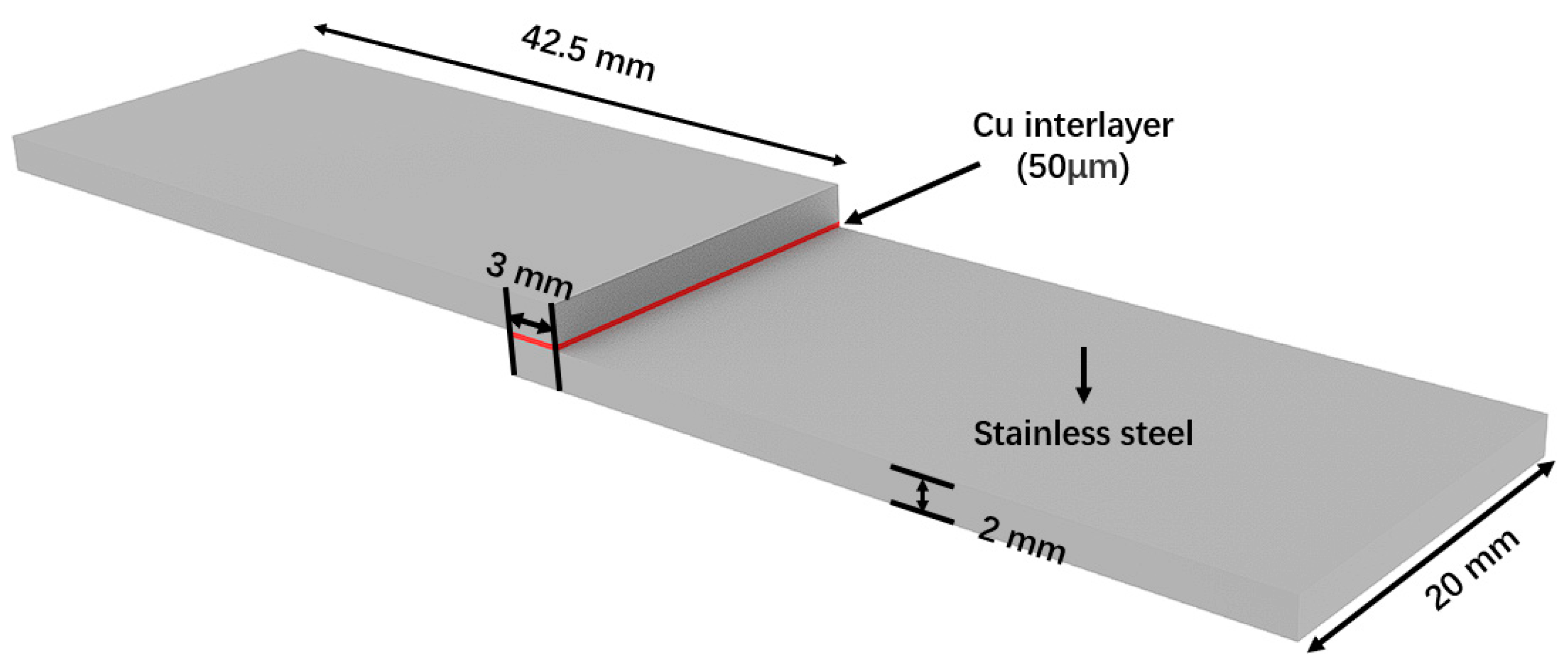

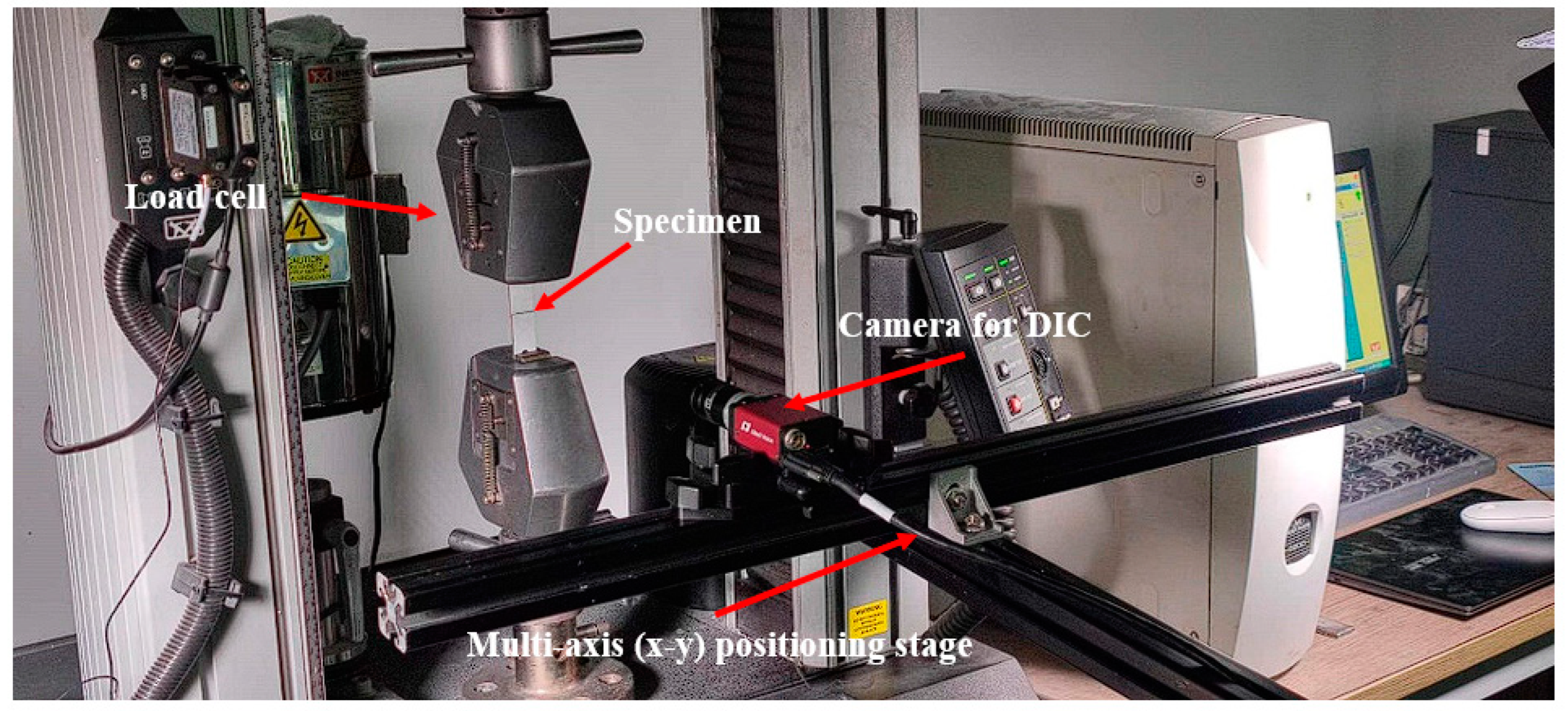
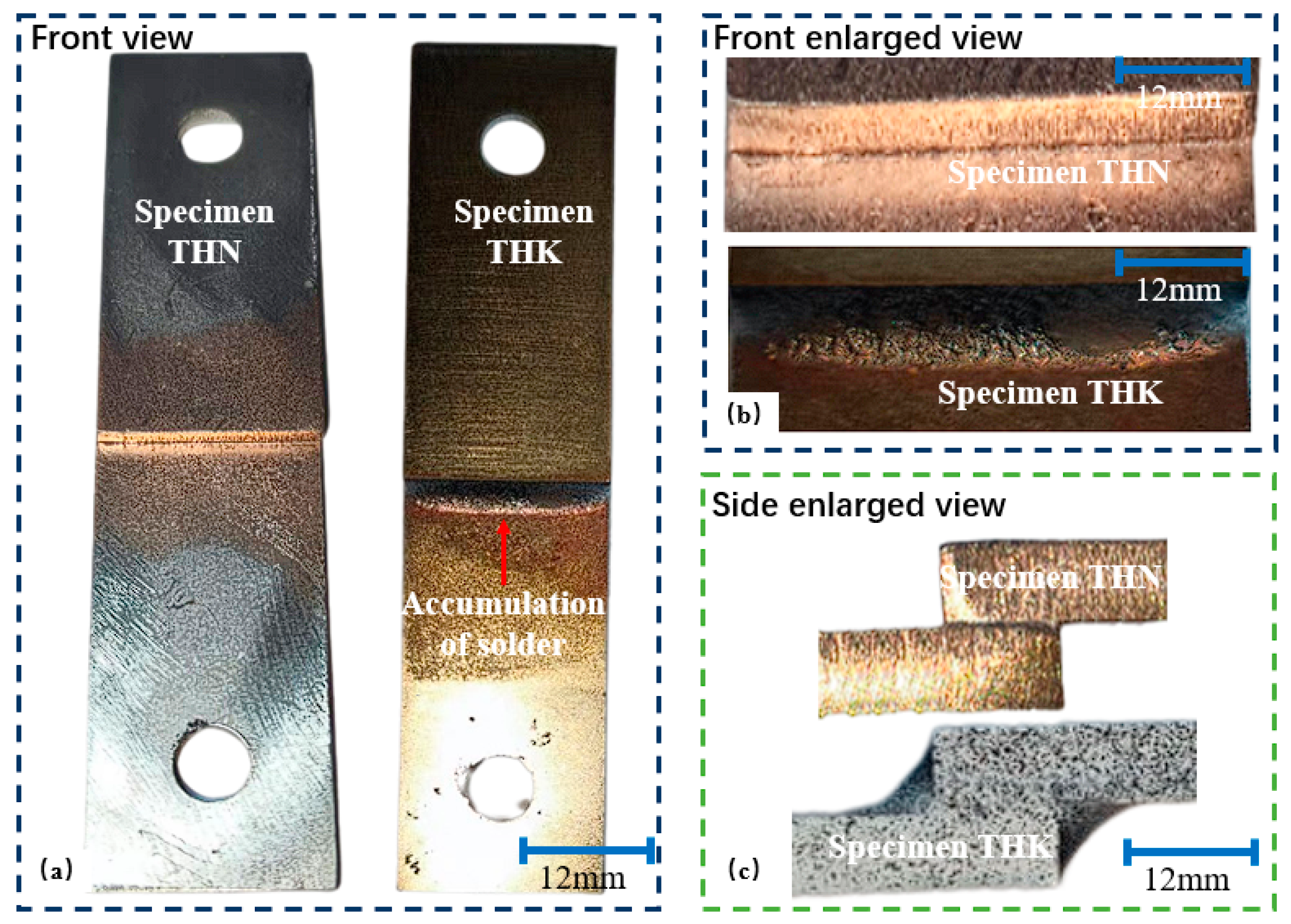
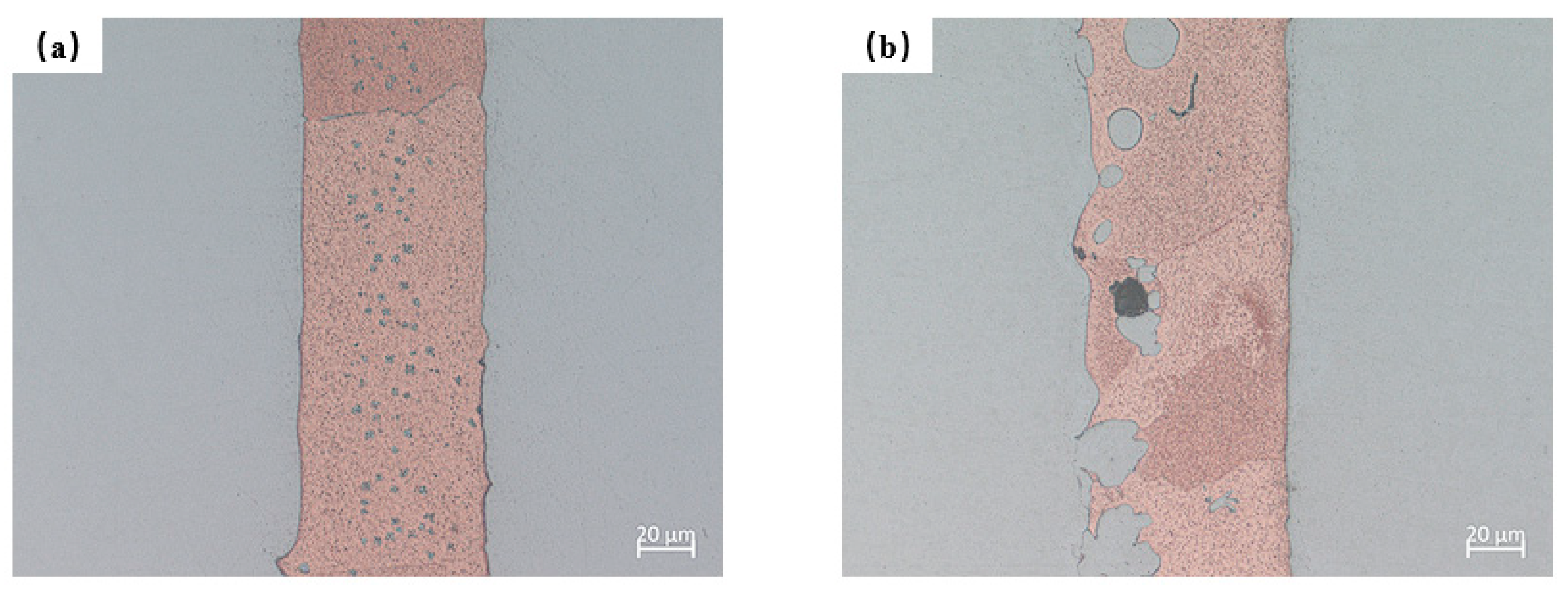
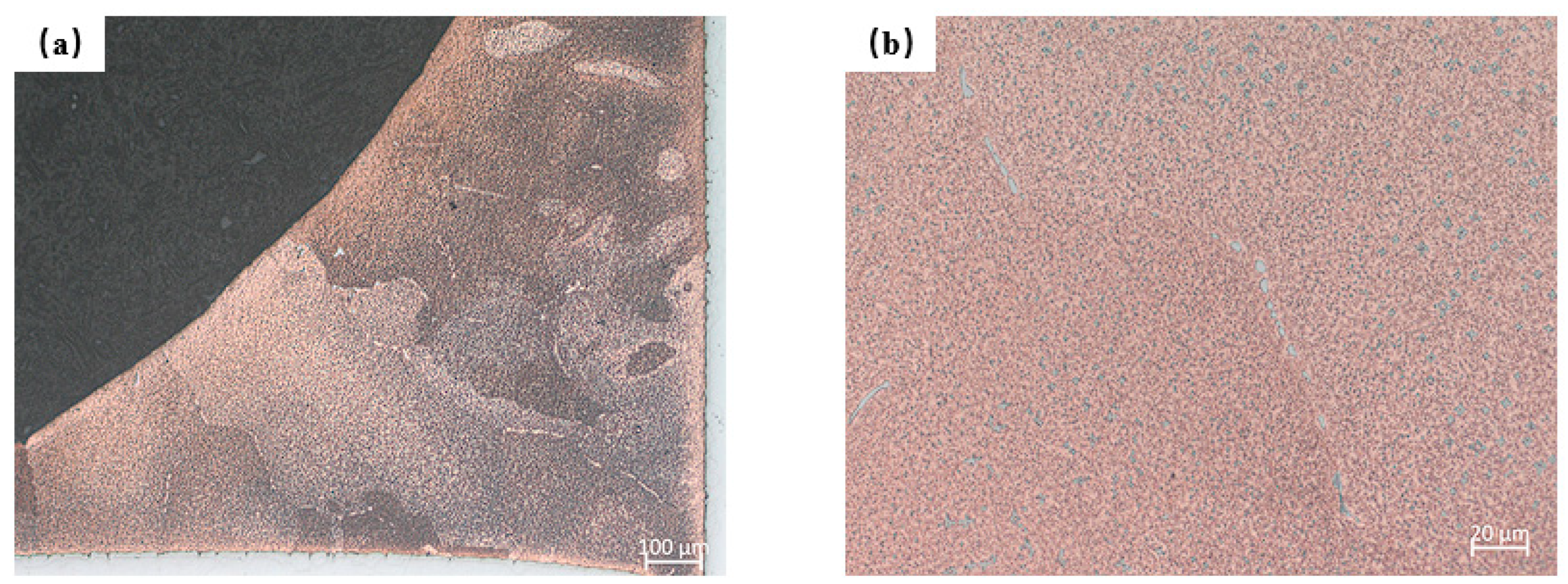
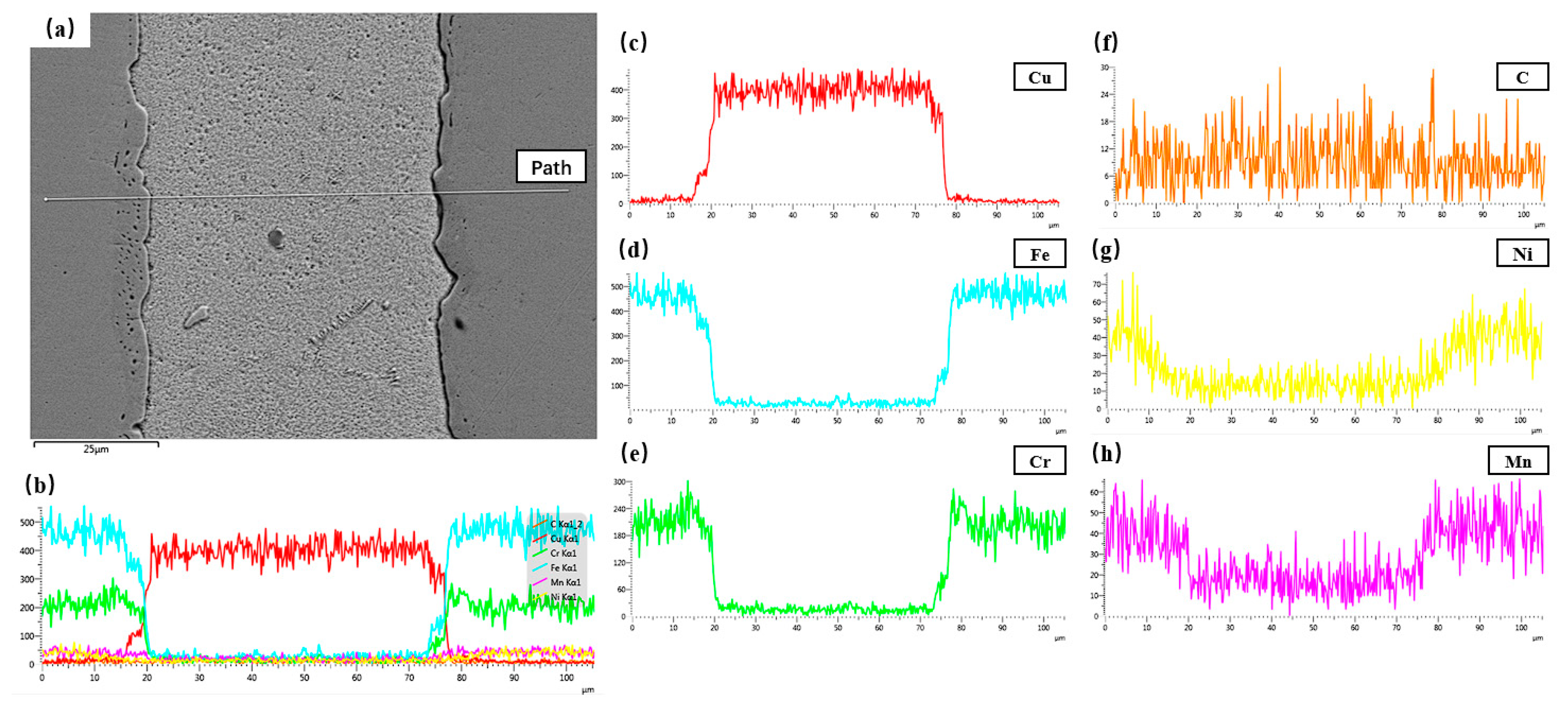
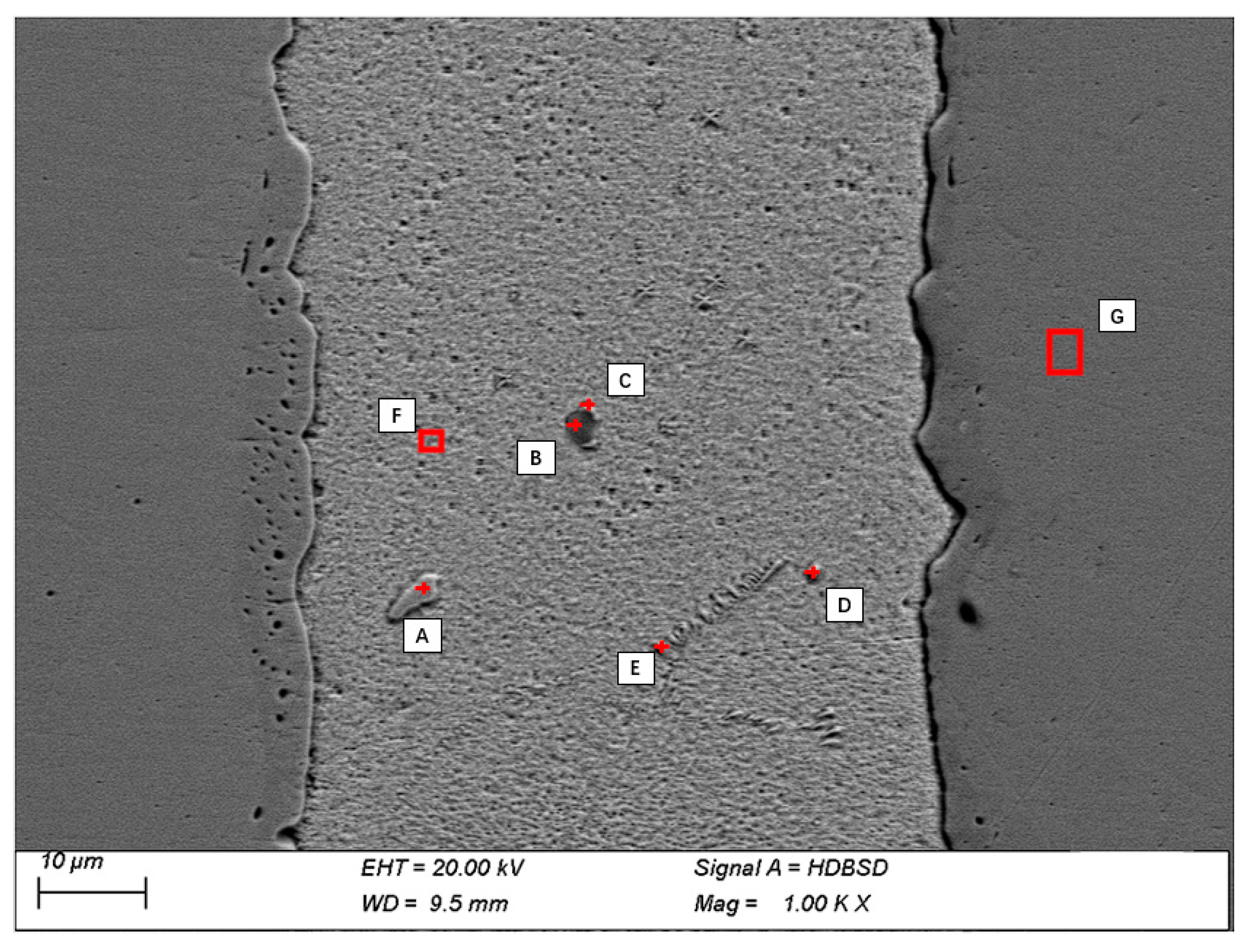

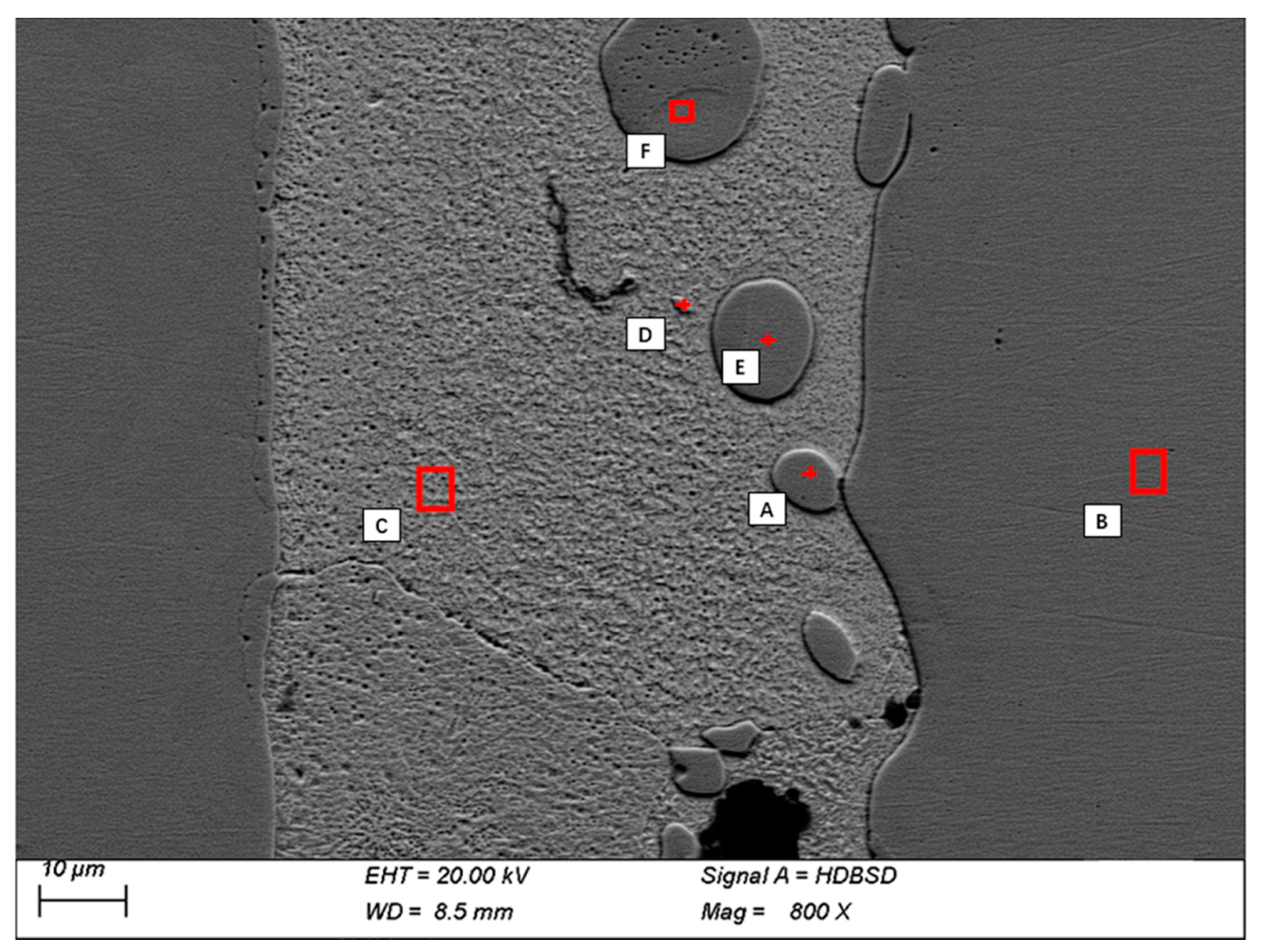
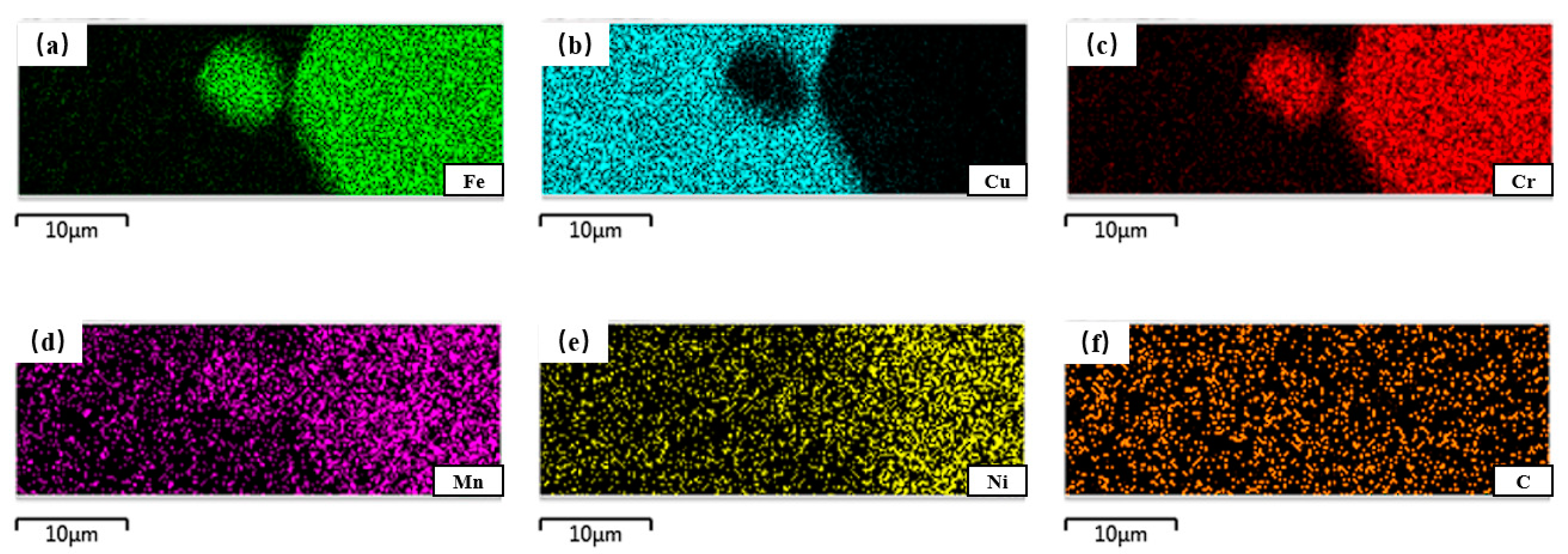
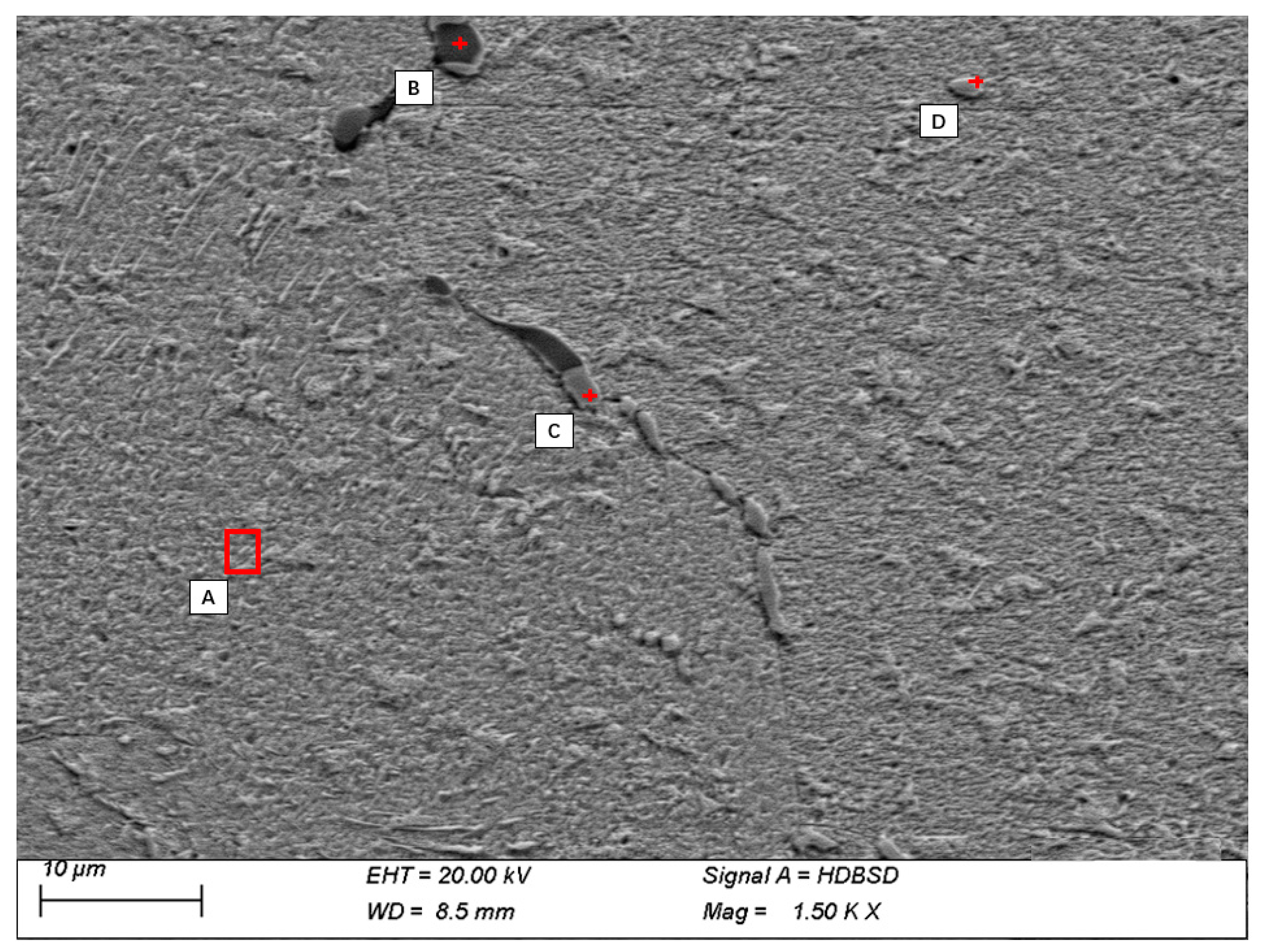
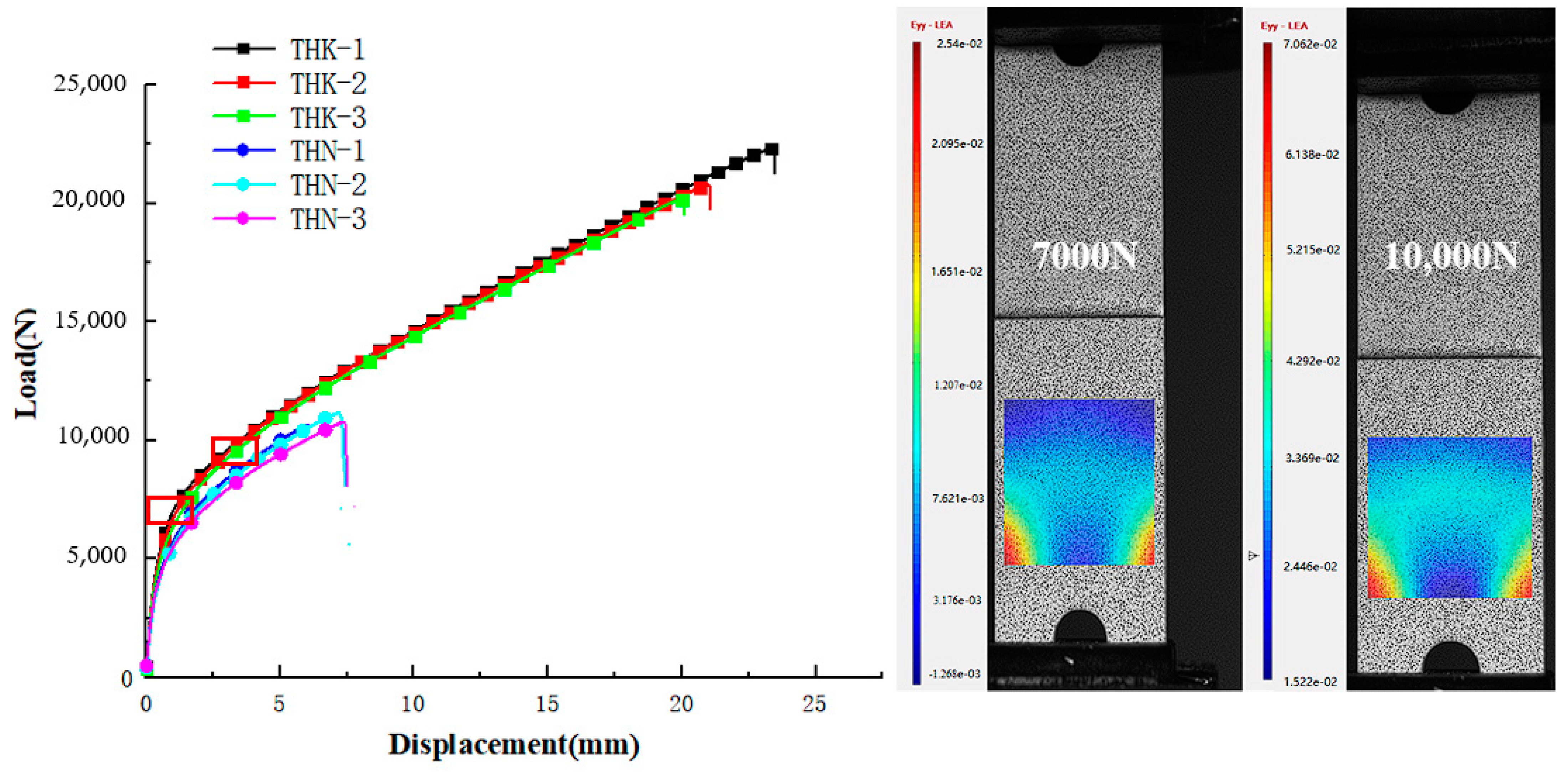
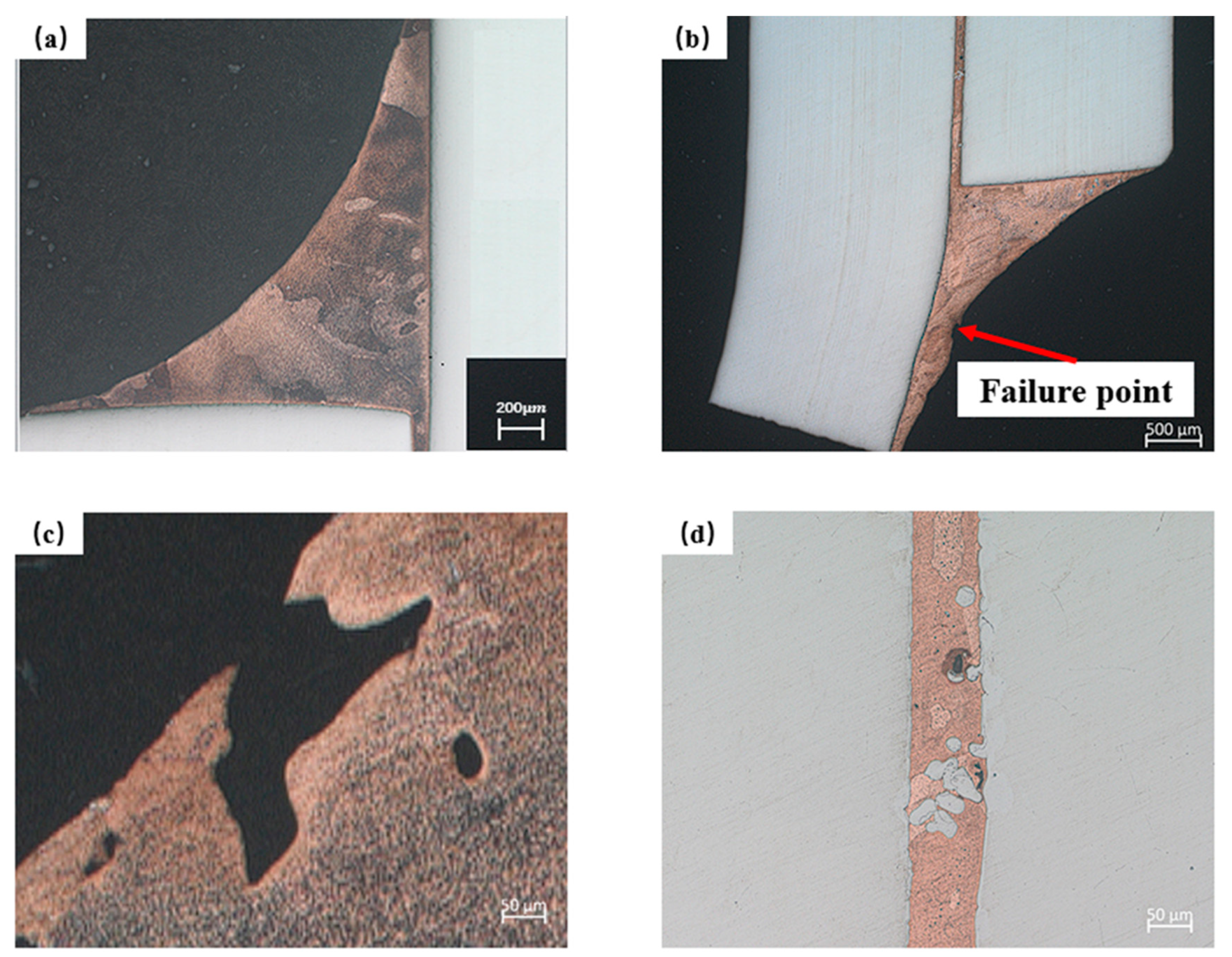

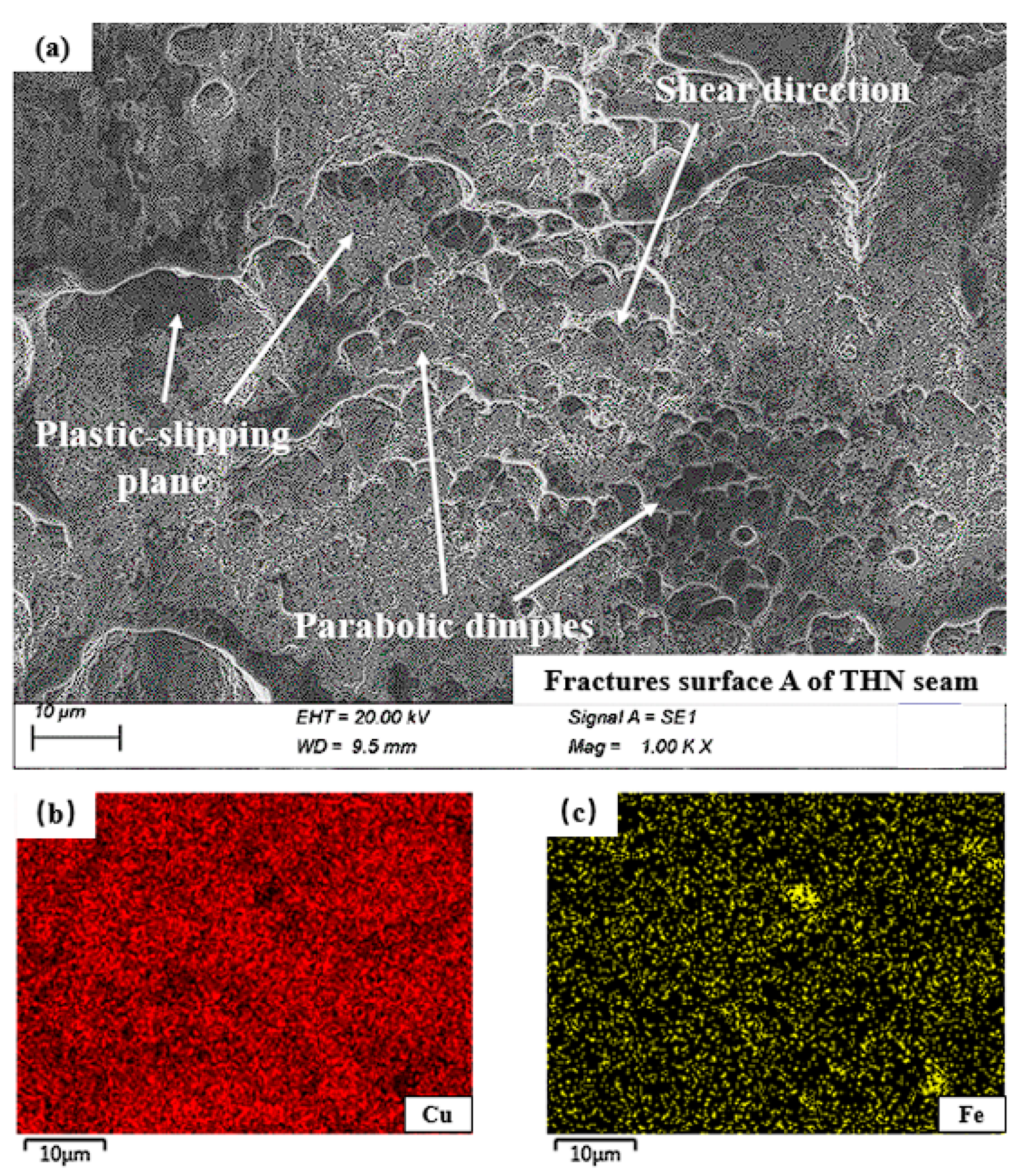
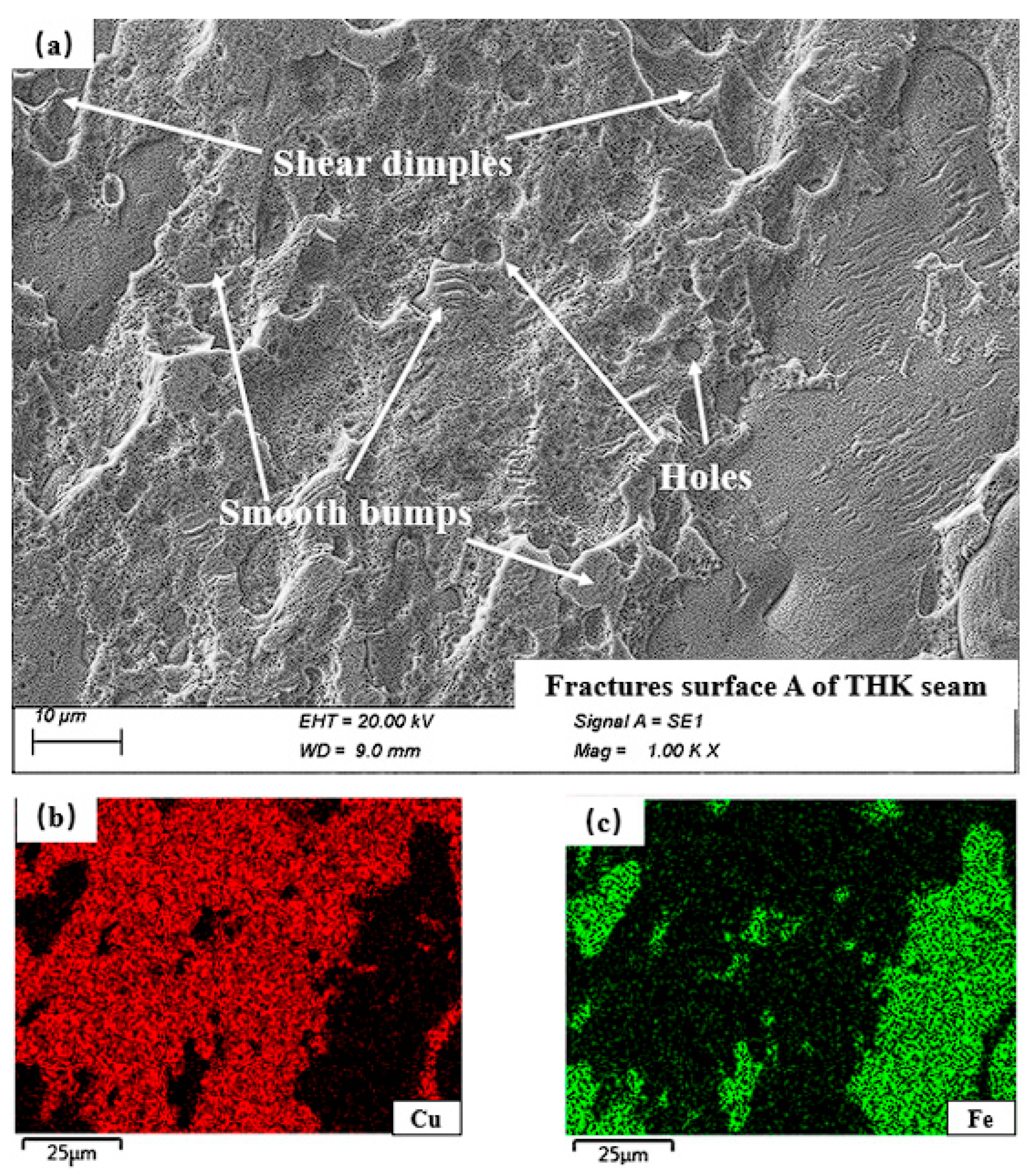
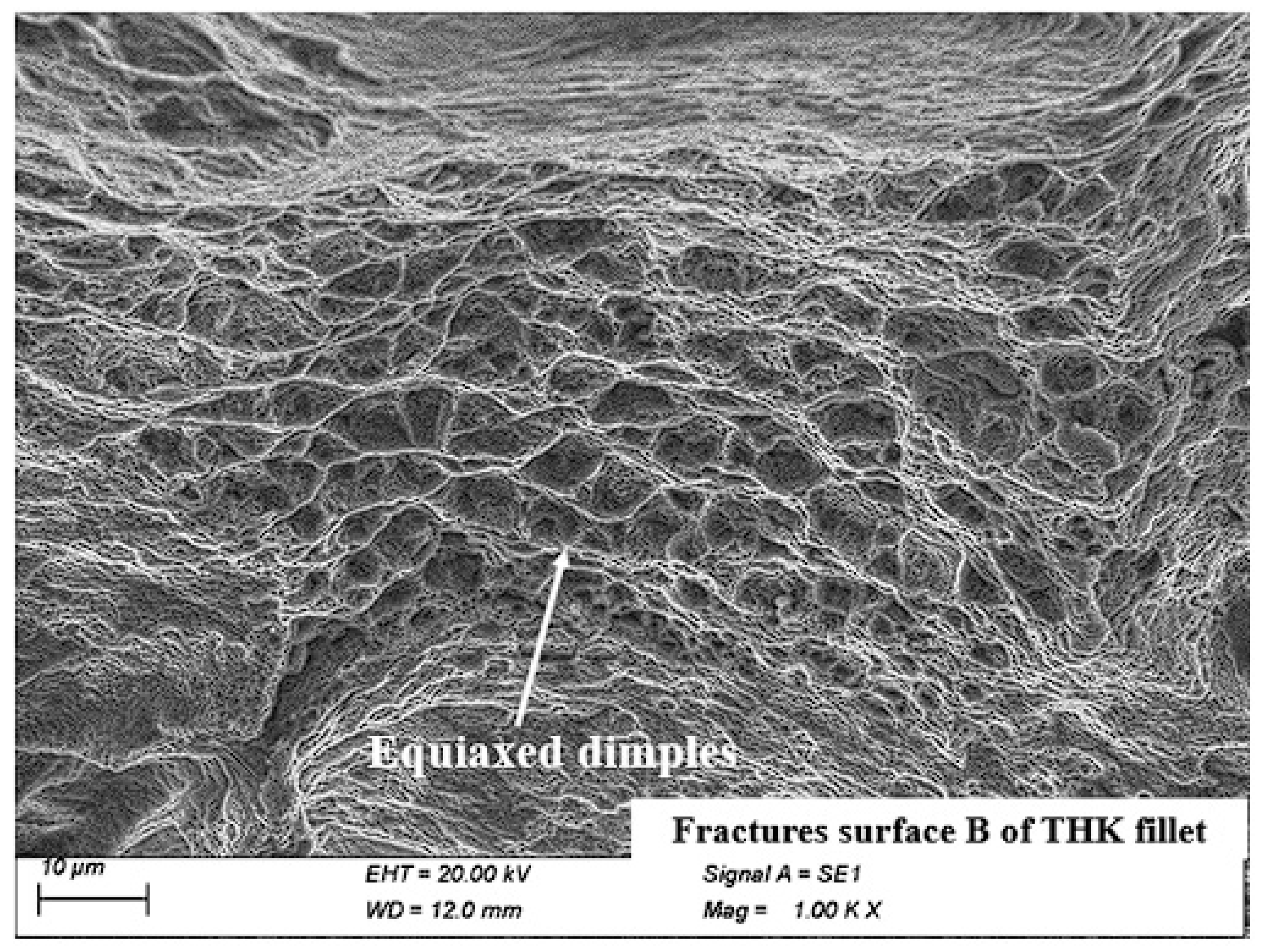
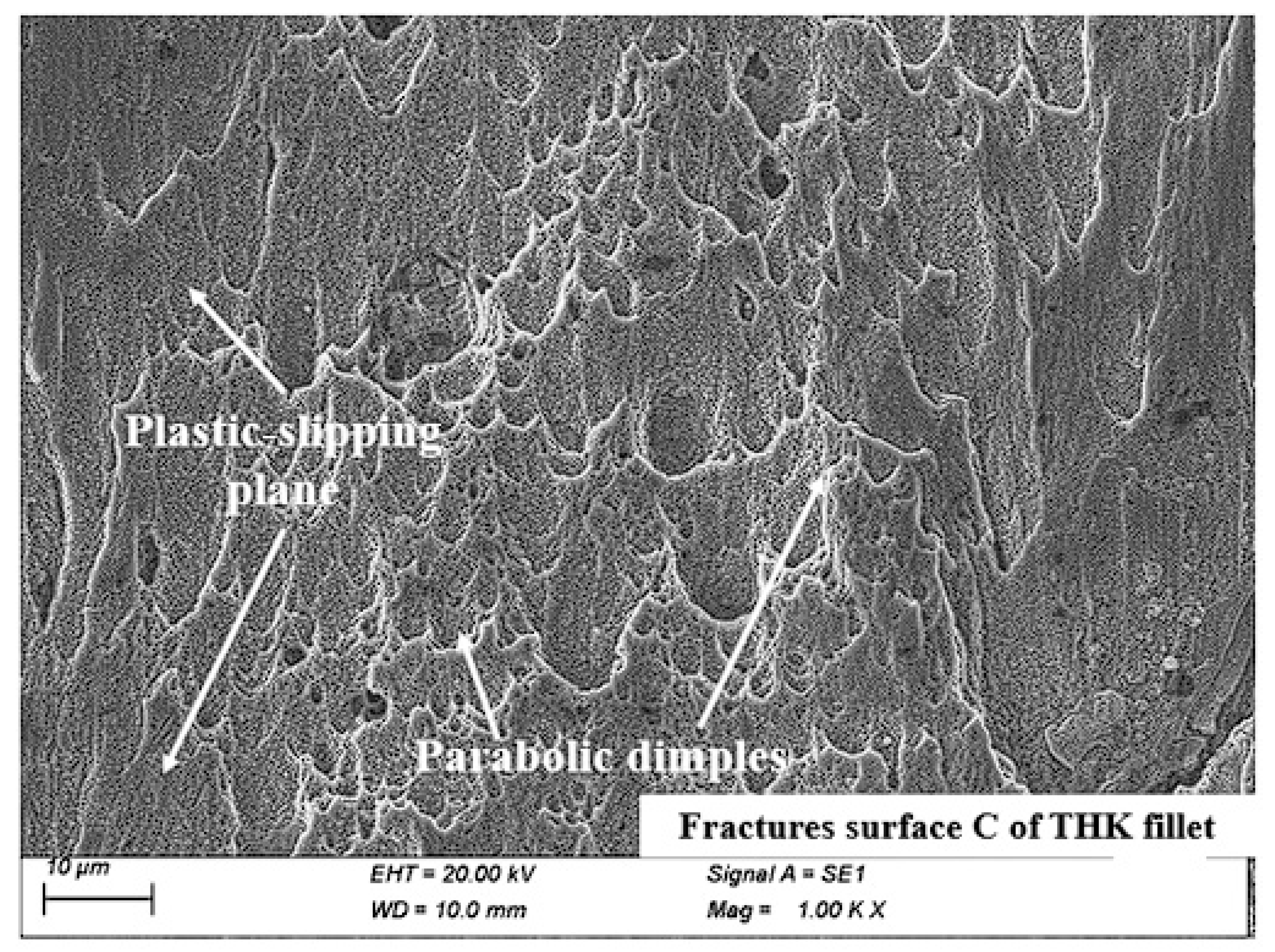
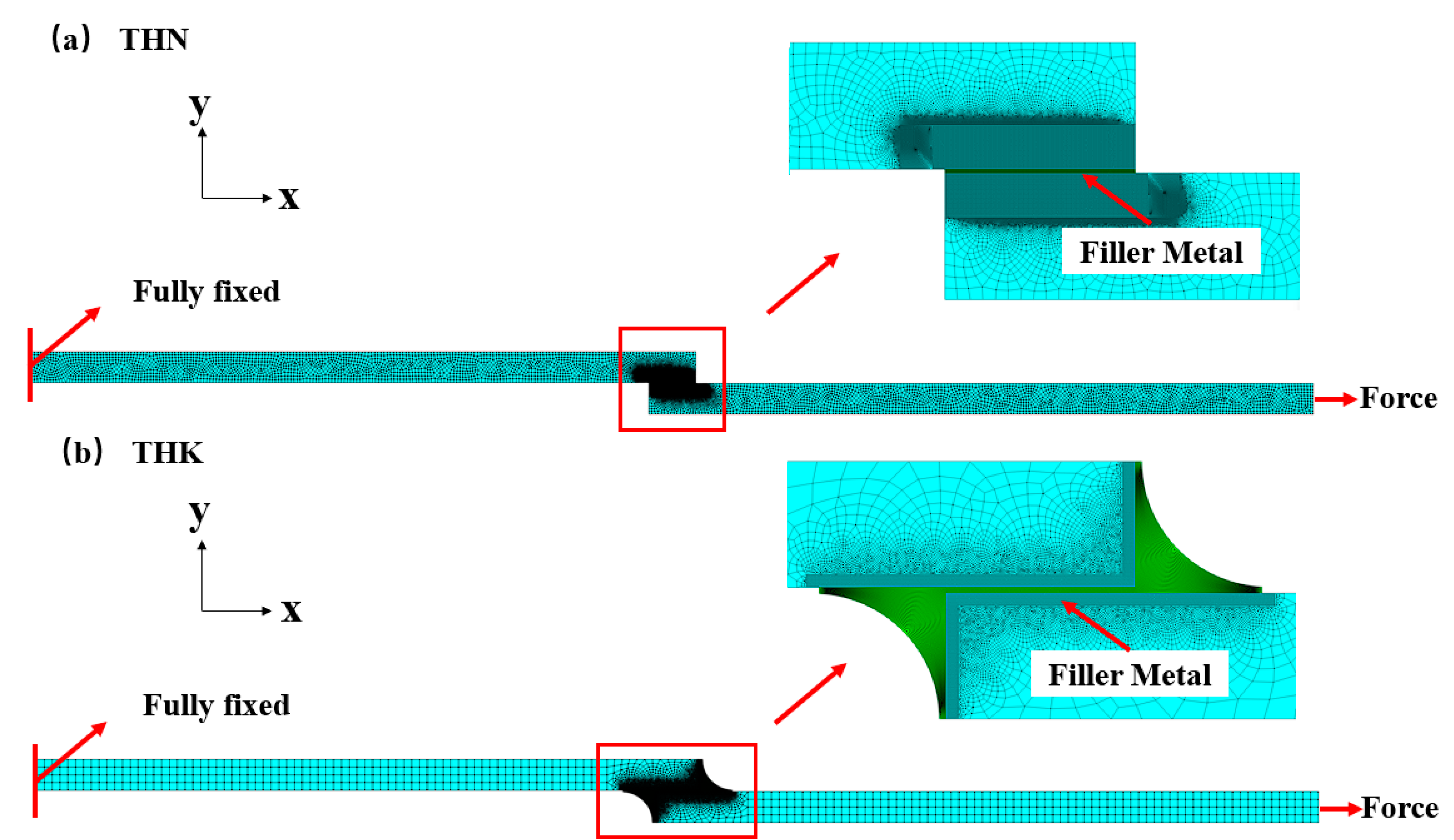
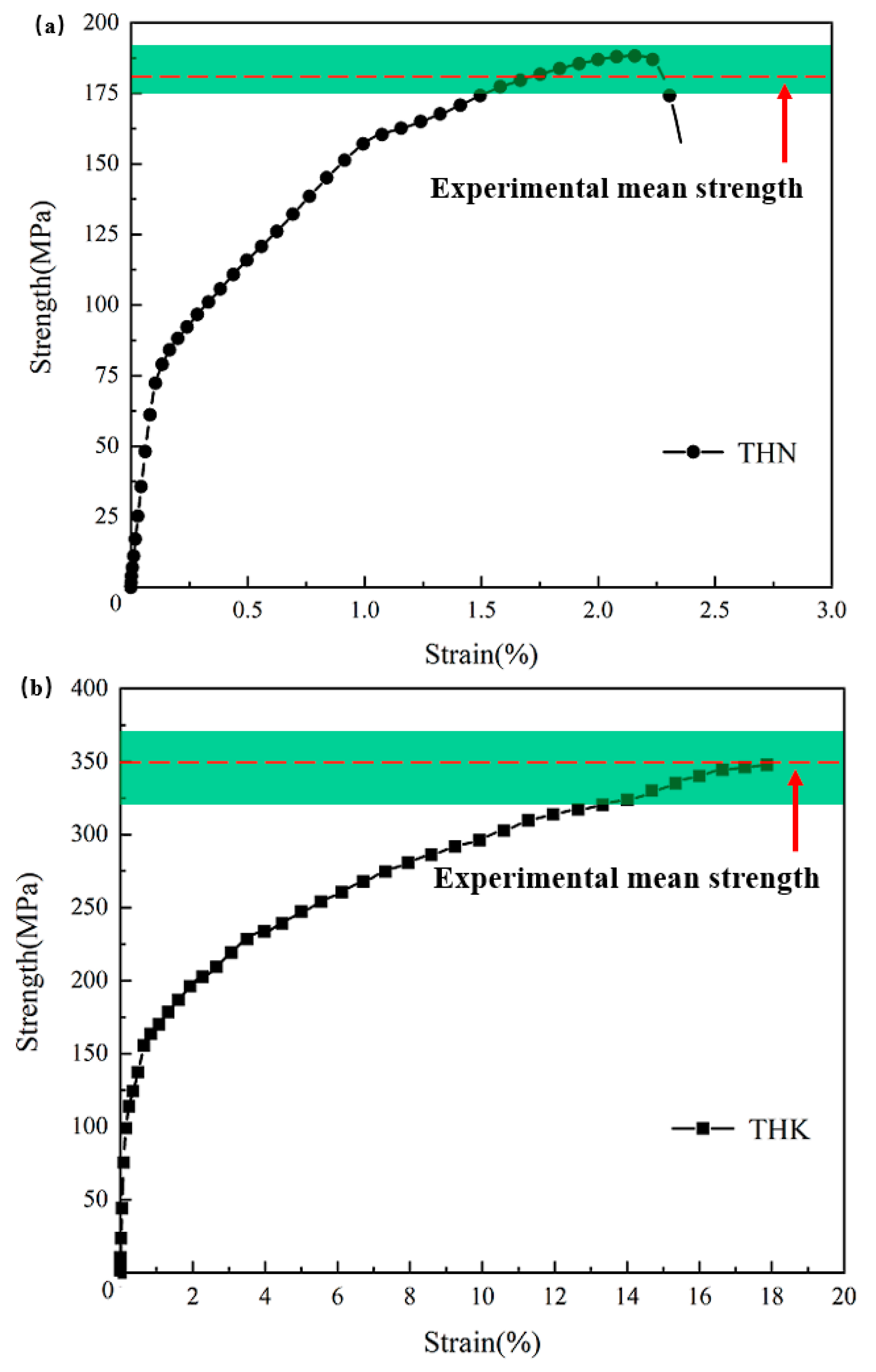
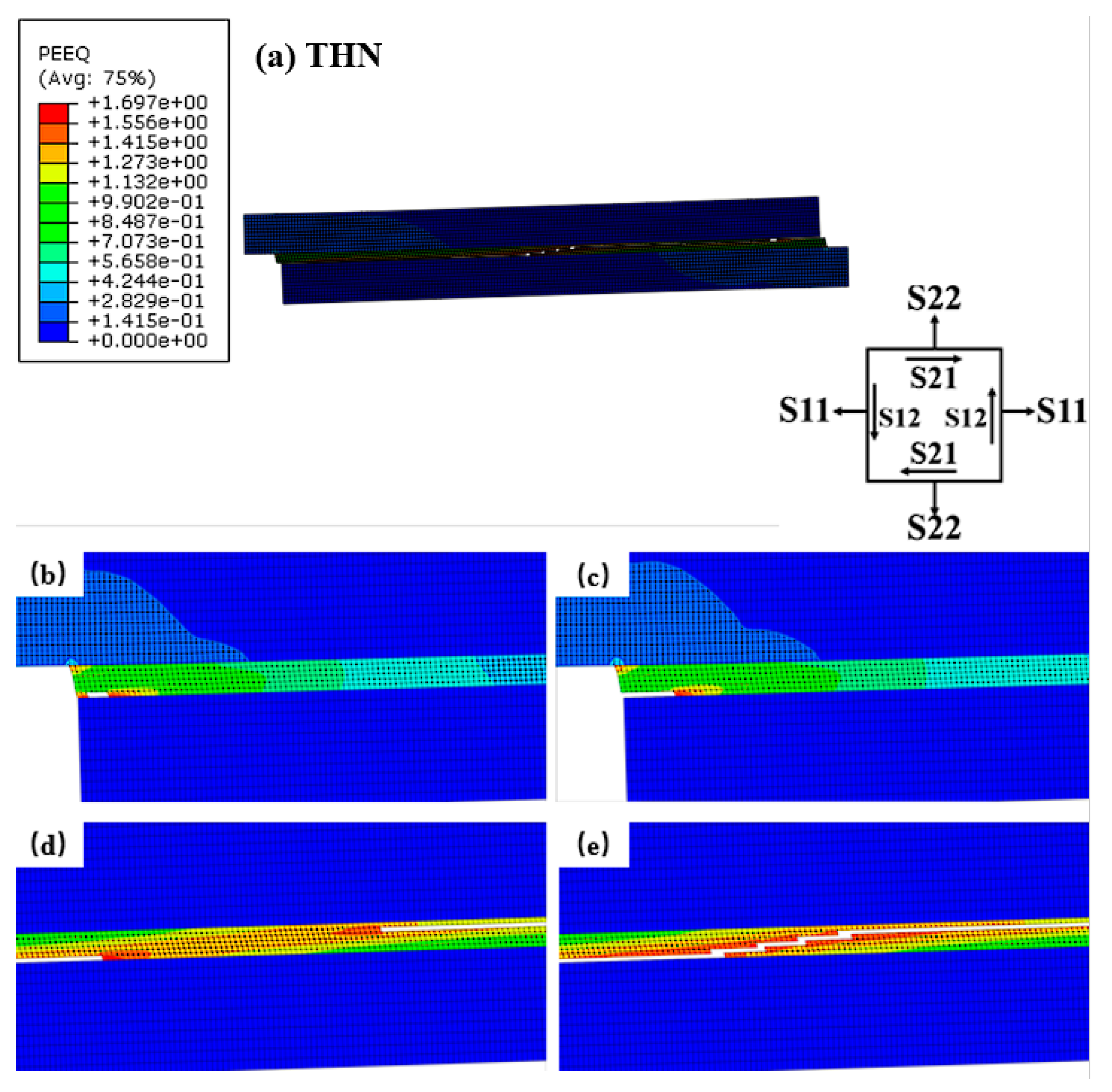
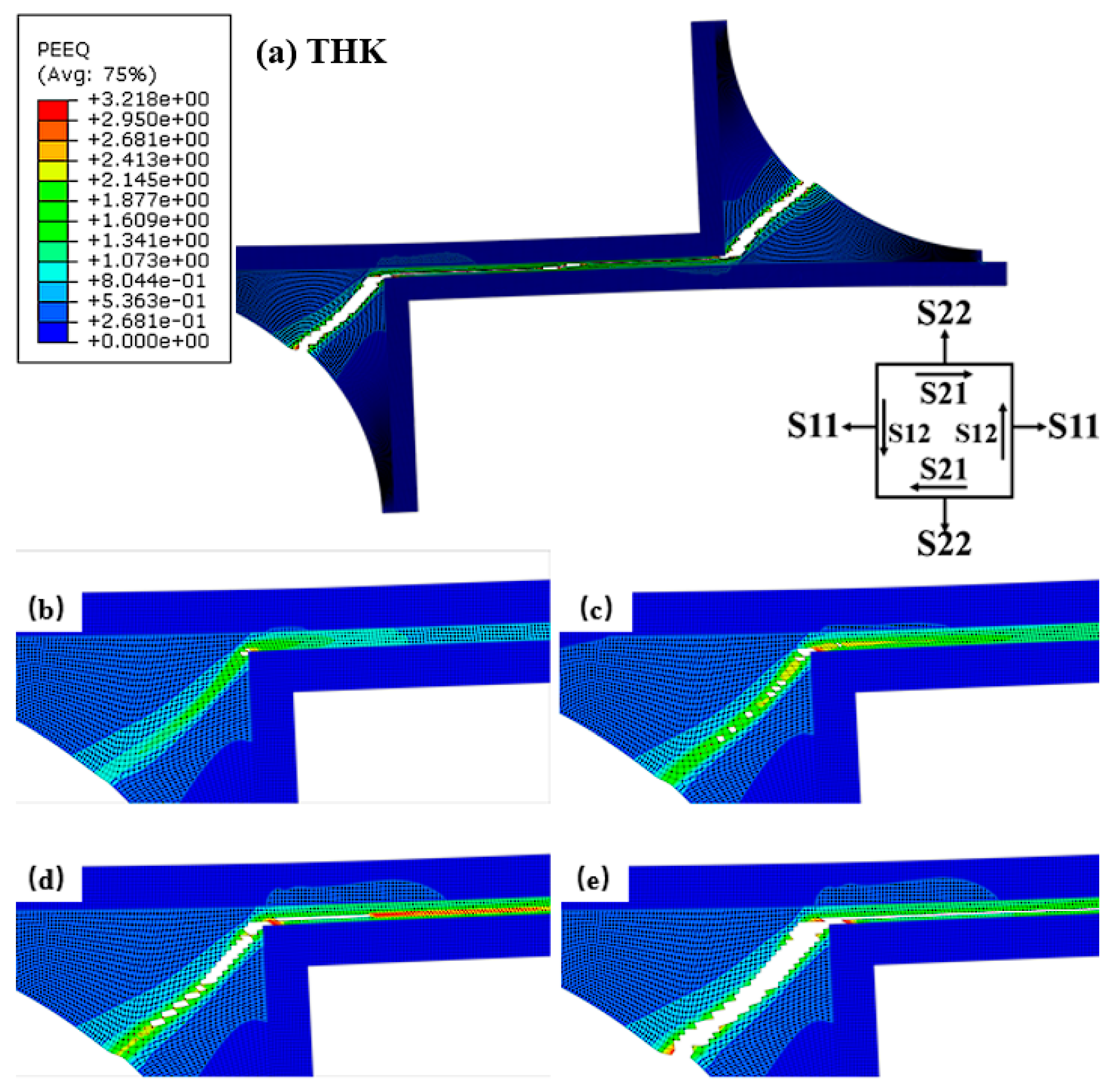
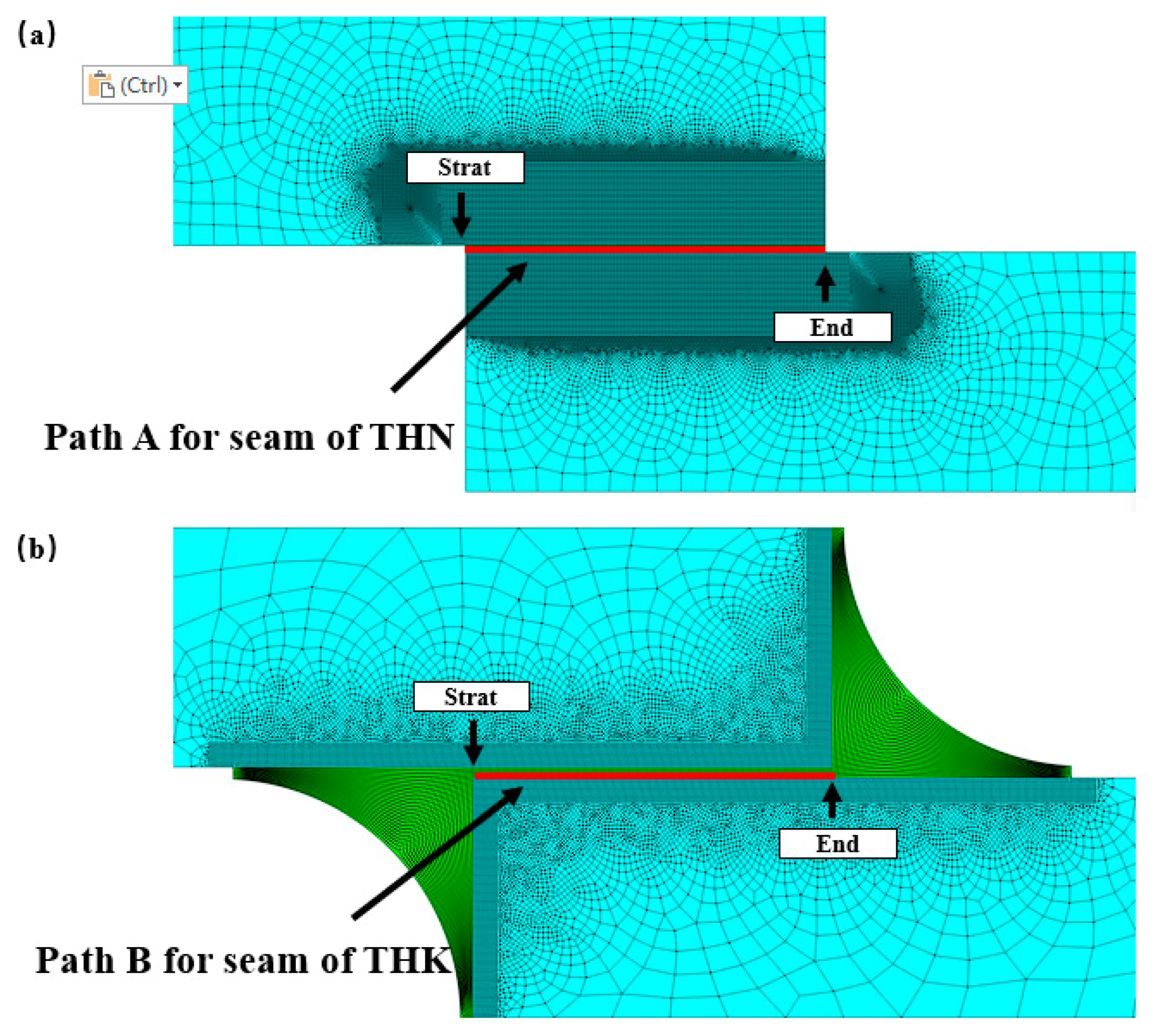
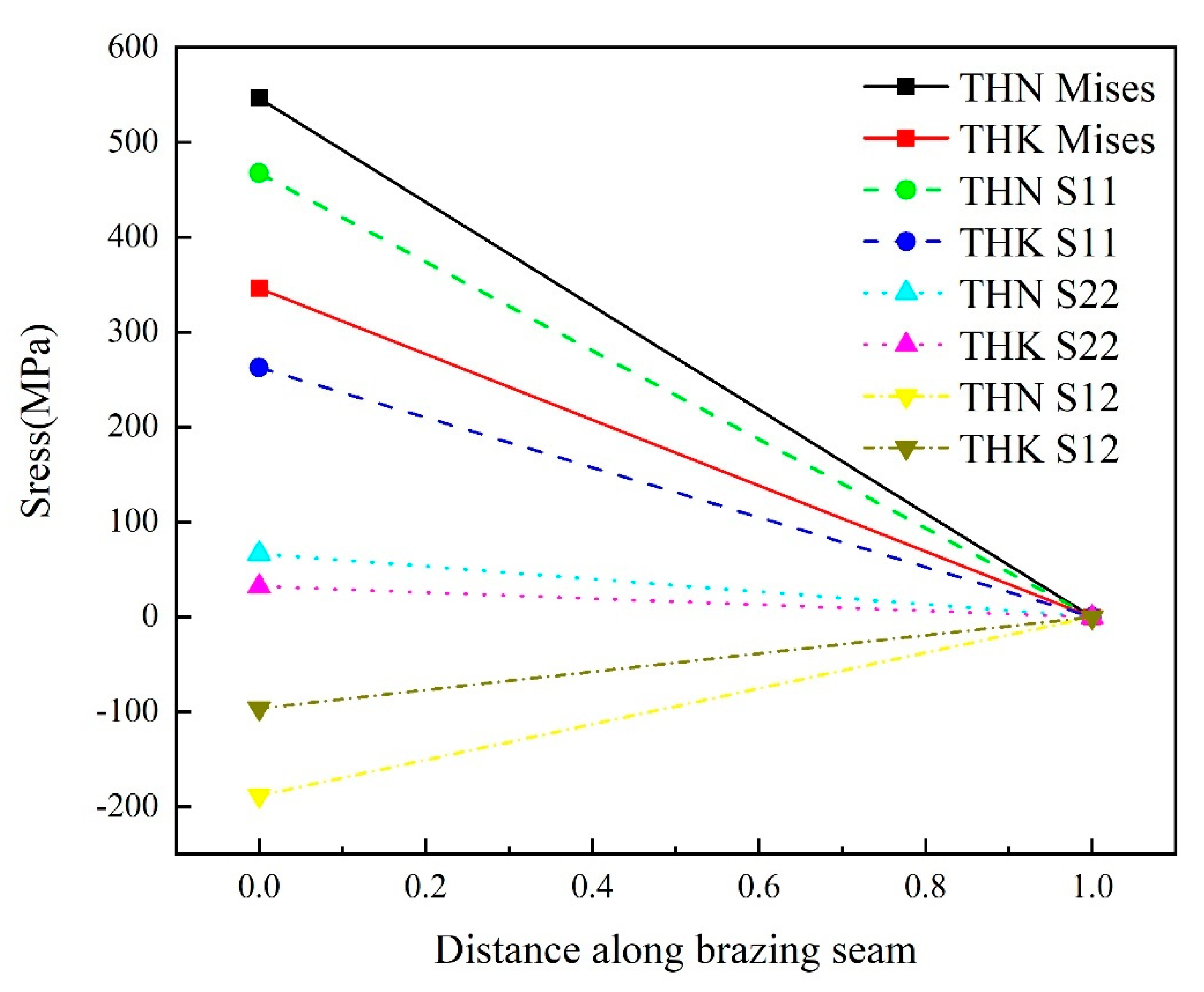
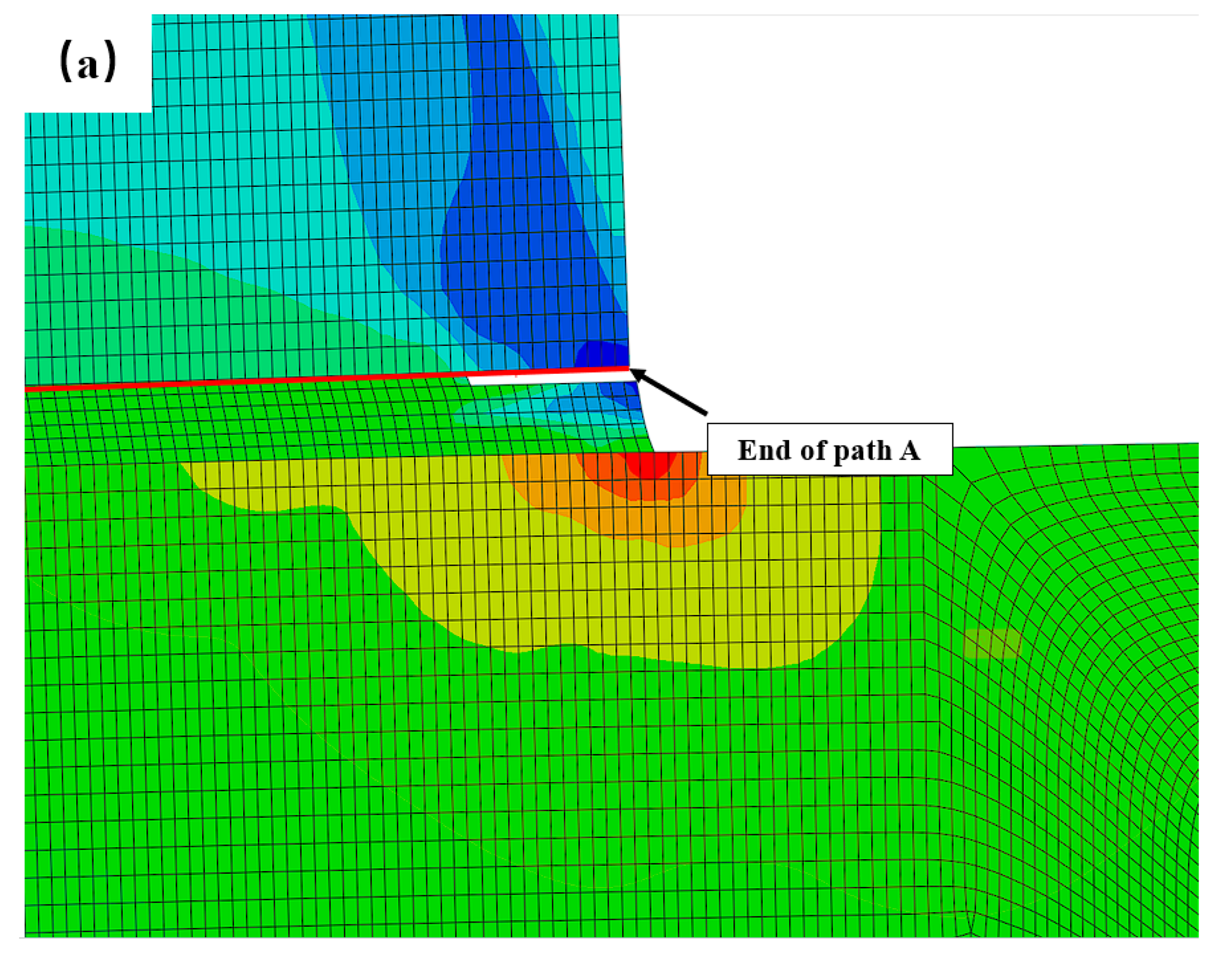
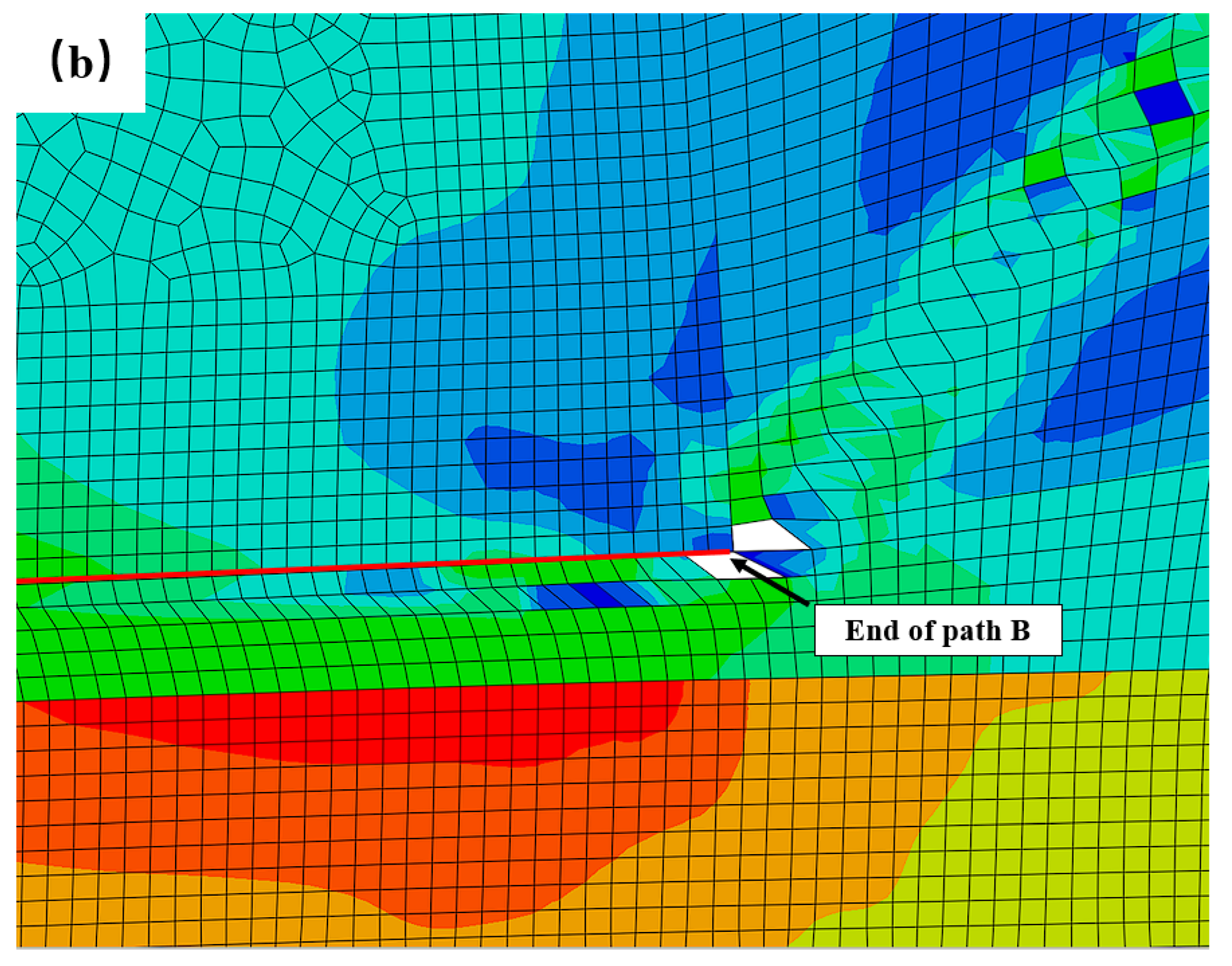
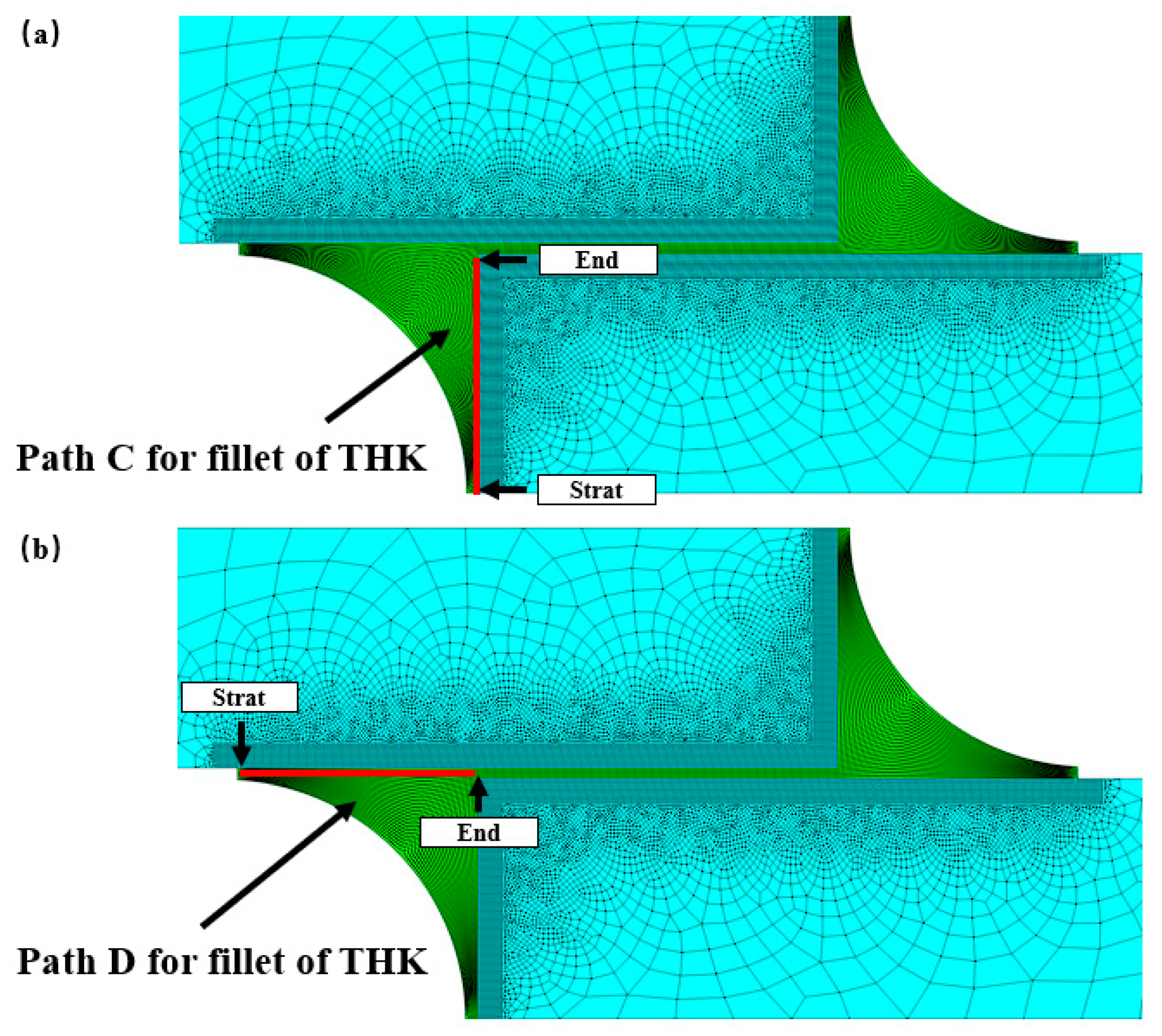
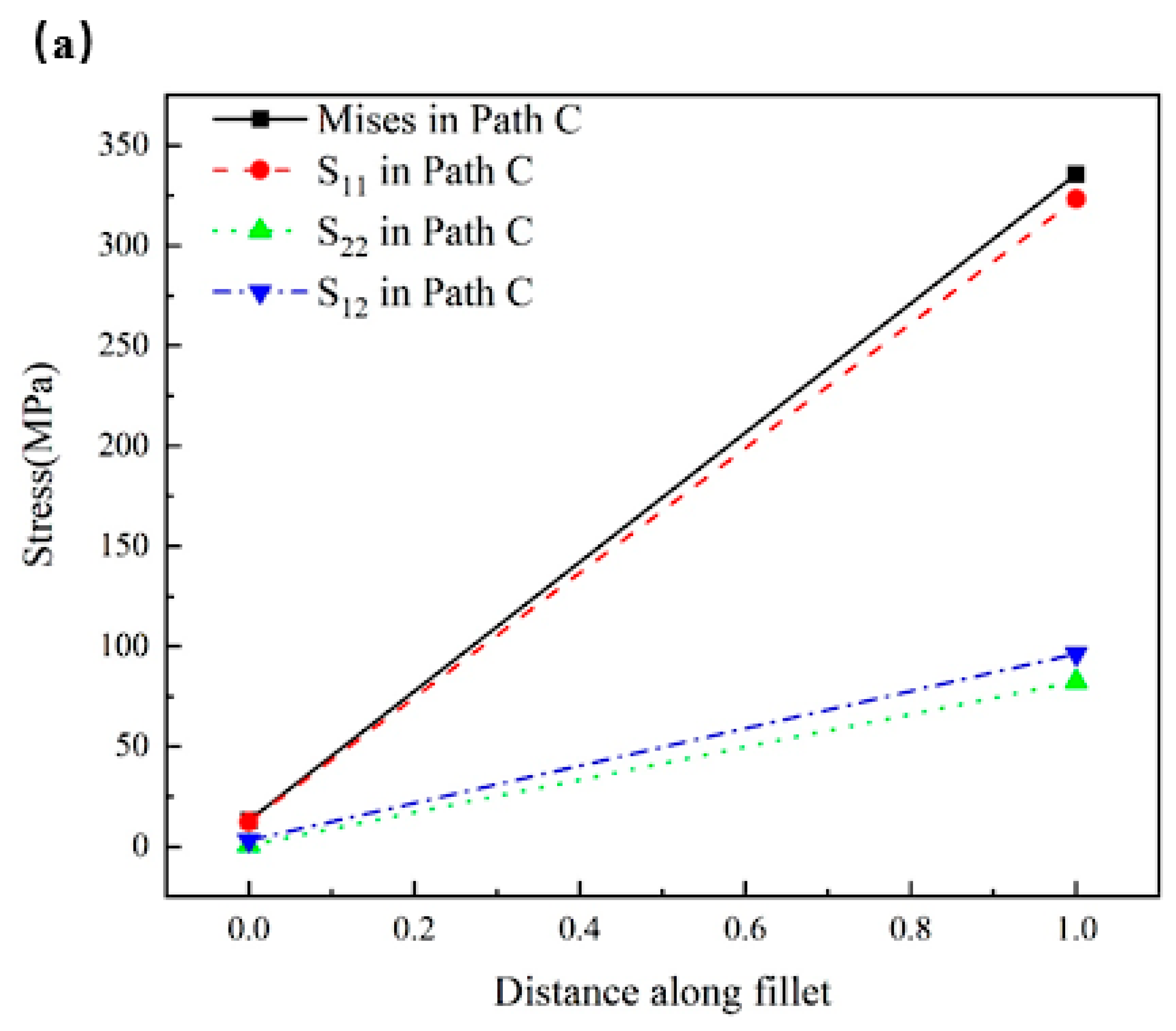
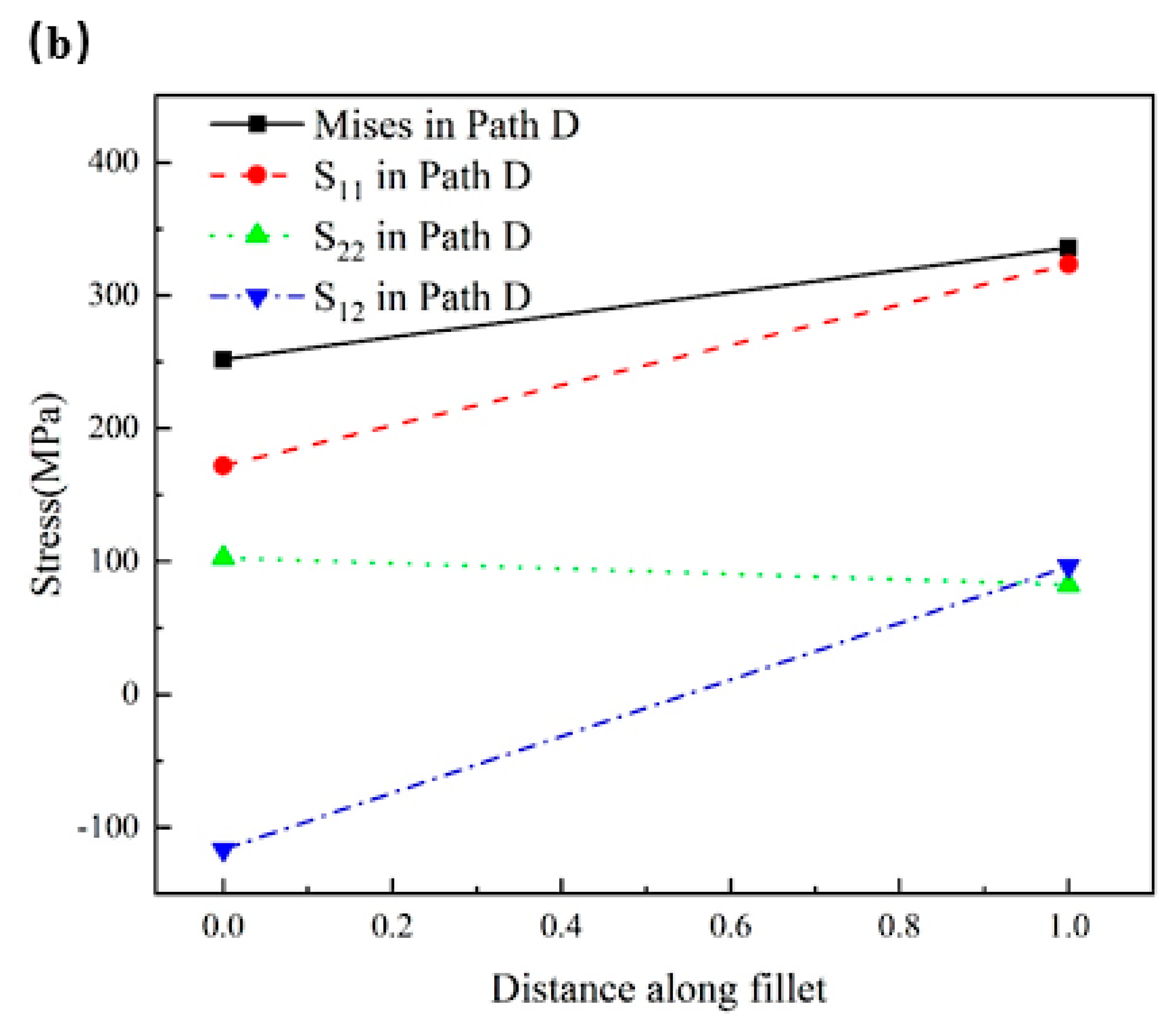
| Materials | C | Si | Mn | S | P | Cr | Ni | Fe | Cu + Ag |
|---|---|---|---|---|---|---|---|---|---|
| 304 | ≤0.03 | ≤1.00 | ≤2.00 | ≤0.03 | ≤0.05 | 17.0–19.0 | 8.00–11.0 | Balance | - |
| Cu | - | 0.0004 | - | 0.0009 | 0.0007 | - | 0.005 | 0.005 | 99.9 |
| Location | C | Cr | Fe | Cu | Mn | S | Ni | Si |
|---|---|---|---|---|---|---|---|---|
| A | 6.16 | 4.49 | 11.16 | 78.19 | - | - | - | - |
| B | 6.75 | 0.67 | 2.4 | 88.53 | 1.05 | 0.6 | - | - |
| C | 7.25 | 1.07 | 3.09 | 85.74 | 1.64 | - | - | - |
| D | 8.7 | - | 1.75 | 88.93 | 0.62 | - | - | - |
| E | 9.02 | - | 1.09 | 89.22 | 0.67 | - | - | - |
| F | 7.08 | 0.19 | 1.17 | 90.15 | 0.61 | - | 0.8 | - |
| G | 3.77 | 18.27 | 68.38 | - | 1.95 | - | 7.16 | 1.95 |
| Location | C | Cr | Fe | Cu | Mn | S | Ni | Si |
|---|---|---|---|---|---|---|---|---|
| A | 6.08 | 16.6 | 69.35 | 7.64 | 0.47 | 0.4 | - | - |
| B | 3.6 | 18.79 | 68.43 | 0 | 1.25 | - | 7.52 | 0.41 |
| C | 6.06 | 0.29 | 1.34 | 91.37 | 0.11 | - | 0.82 | - |
| D | 8.18 | 0.26 | 1.92 | 88.79 | - | - | 0.68 | - |
| E | 5.85 | 15.95 | 63.27 | 11.3 | 0.5 | - | 2.68 | 0.36 |
| F | 3.58 | 16.45 | 70.35 | 6.87 | - | - | 2.37 | 0.37 |
| Location | C | Cr | Fe | Cu | Mn | S | Ni |
|---|---|---|---|---|---|---|---|
| A | 5.71 | 1.82 | 91.57 | 0.27 | 0.64 | ||
| B | 14.41 | 25.59 | 6.29 | 5.09 | 23.68 | 24.9 | 0.04 |
| C | 8.87 | 34.72 | 45.9 | 5.93 | 1.97 | 1.77 | 8.87 |
| D | 12.03 | 0.2 | 1.14 | 85.77 | 0.11 | 0.75 |
| Material | Elastic Modulus (GPa) | Yield Stress (MPa) | Poisson’s Ratio |
|---|---|---|---|
| AISI304 | 198.5 | 265 | 0.294 |
| Cu | 125 | 69 | 0.35 |
Disclaimer/Publisher’s Note: The statements, opinions and data contained in all publications are solely those of the individual author(s) and contributor(s) and not of MDPI and/or the editor(s). MDPI and/or the editor(s) disclaim responsibility for any injury to people or property resulting from any ideas, methods, instructions or products referred to in the content. |
© 2023 by the authors. Licensee MDPI, Basel, Switzerland. This article is an open access article distributed under the terms and conditions of the Creative Commons Attribution (CC BY) license (https://creativecommons.org/licenses/by/4.0/).
Share and Cite
Chen, H.; Li, N.; Wei, X.; Liu, S.; Ling, X. Effect of Brazing Fillet on the Microstructure and Mechanical Properties of Vacuum Brazing Stainless Steel Joints. Metals 2023, 13, 1369. https://doi.org/10.3390/met13081369
Chen H, Li N, Wei X, Liu S, Ling X. Effect of Brazing Fillet on the Microstructure and Mechanical Properties of Vacuum Brazing Stainless Steel Joints. Metals. 2023; 13(8):1369. https://doi.org/10.3390/met13081369
Chicago/Turabian StyleChen, Huixin, Nian Li, Xinlong Wei, Shangwen Liu, and Xiang Ling. 2023. "Effect of Brazing Fillet on the Microstructure and Mechanical Properties of Vacuum Brazing Stainless Steel Joints" Metals 13, no. 8: 1369. https://doi.org/10.3390/met13081369
APA StyleChen, H., Li, N., Wei, X., Liu, S., & Ling, X. (2023). Effect of Brazing Fillet on the Microstructure and Mechanical Properties of Vacuum Brazing Stainless Steel Joints. Metals, 13(8), 1369. https://doi.org/10.3390/met13081369







